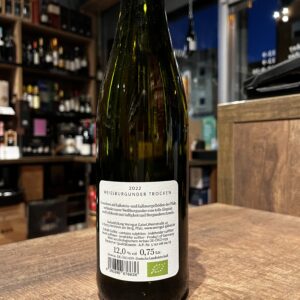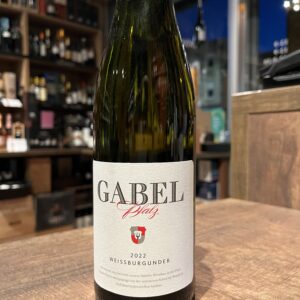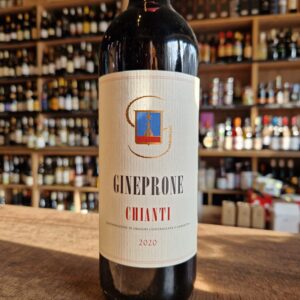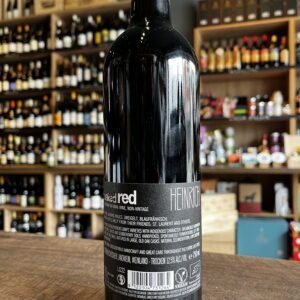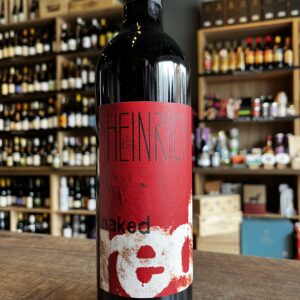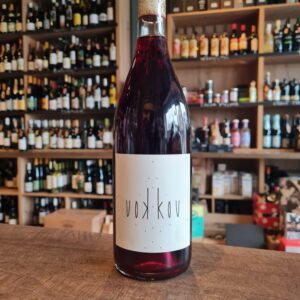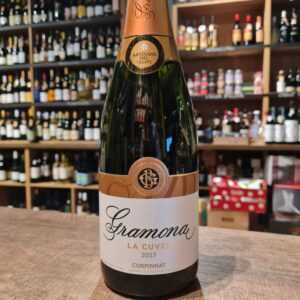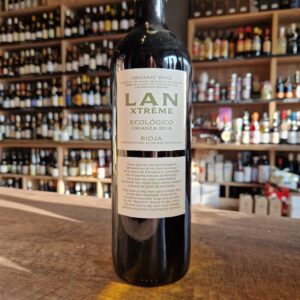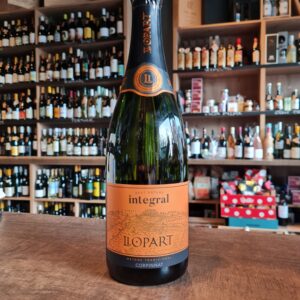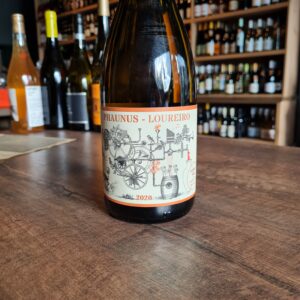-
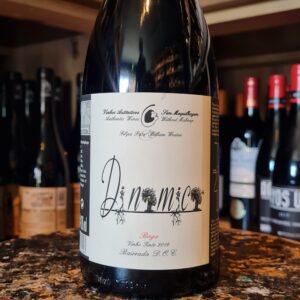 Filipa Pato is the confirmation of the old saying "son of fish knows how to swim". Although she followed the footsteps of her father Luís Pato, even in her academic training, Filipa always wanted to have her own world, her own project, where she would show her ideas, and go up with her own pulse. It was the 2001 harvest, a great year in Bairrada, which would provide all of this. That year, she decided to walk on her own feet, creating her dream. The success was immediate, and soon she rose to the status of one of the most brilliant winemakers in Portugal. The wines are the result of Filipa's innovative and brilliant spirit. They were quickly at the forefront of national and international criticism. In 2011, with her husband William Wouters, a prestigious Belgian Sommelier and owner of the Pazzo restaurant in Antwerp, Filipa receives the title "Newcomer of the year".
Filipa Pato is the confirmation of the old saying "son of fish knows how to swim". Although she followed the footsteps of her father Luís Pato, even in her academic training, Filipa always wanted to have her own world, her own project, where she would show her ideas, and go up with her own pulse. It was the 2001 harvest, a great year in Bairrada, which would provide all of this. That year, she decided to walk on her own feet, creating her dream. The success was immediate, and soon she rose to the status of one of the most brilliant winemakers in Portugal. The wines are the result of Filipa's innovative and brilliant spirit. They were quickly at the forefront of national and international criticism. In 2011, with her husband William Wouters, a prestigious Belgian Sommelier and owner of the Pazzo restaurant in Antwerp, Filipa receives the title "Newcomer of the year". -
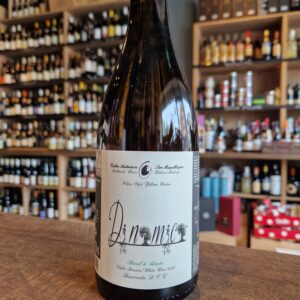 Filipa Pato and husband, William Wouters have created an expressive range of wines representing the native grape varietals of the Barriada region. Their philosophy is simple: "create authentic wines without make-up to express the true nature of the vineyards they come from". Bairrada is a coastal DOC which borders Vinho Verde, Dão and Lisboa. It has mild and wet winters and hot windy summers. The climatic thermal range, brought about by the Atlantic influence, brings high acidity and freshness to the grapes here. Filipa and William practice biodynamic viticulture and are undergoing conversion to organic certification. The wine is unfined. Drink with sheep and goats cheese, dressed salads, and delicate poultry dishes.
Filipa Pato and husband, William Wouters have created an expressive range of wines representing the native grape varietals of the Barriada region. Their philosophy is simple: "create authentic wines without make-up to express the true nature of the vineyards they come from". Bairrada is a coastal DOC which borders Vinho Verde, Dão and Lisboa. It has mild and wet winters and hot windy summers. The climatic thermal range, brought about by the Atlantic influence, brings high acidity and freshness to the grapes here. Filipa and William practice biodynamic viticulture and are undergoing conversion to organic certification. The wine is unfined. Drink with sheep and goats cheese, dressed salads, and delicate poultry dishes. -
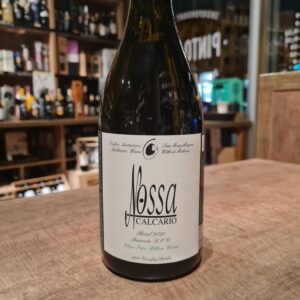 This mineral-driven white wine from Filipa Pato is akin to top quality white Burgundy. Using the Bical grape, the wine is aged in old French oak barrels and displays a great balance between creamy richness and lean minerality. Following in the footsteps in the winemaking traditions of her well-known father, Luis, Filipa Pato has now, in her own right, garnered a reputation for producing a superb range of wines in the heart of Bairrada, in Ois do Bairro. Focussing on Bairrada’s local native grape varieties, Filipa’s top-level white. It should be served not too cold, decanted into elegant glasses. It goes well with cheeses, fish dishes and salads.
This mineral-driven white wine from Filipa Pato is akin to top quality white Burgundy. Using the Bical grape, the wine is aged in old French oak barrels and displays a great balance between creamy richness and lean minerality. Following in the footsteps in the winemaking traditions of her well-known father, Luis, Filipa Pato has now, in her own right, garnered a reputation for producing a superb range of wines in the heart of Bairrada, in Ois do Bairro. Focussing on Bairrada’s local native grape varieties, Filipa’s top-level white. It should be served not too cold, decanted into elegant glasses. It goes well with cheeses, fish dishes and salads. -
Out of stock
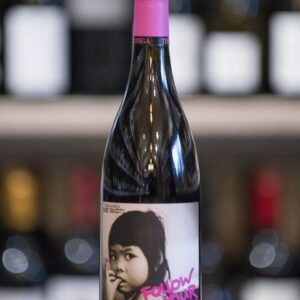 Craig and Carla Hawkins launched Testalonga in the north of Swartland, South Africa in 2008. They are part of a revolutionary ground swell taking place in South African wine, where traditions are being challenged and brave new territory is being explored. The painfully small amount of wine that this duo produces gets snapped up in short order the world over. Known for their striking intensity and nervy energy, Craig and Carla's wines are on the cutting edge of the natural wine movement in their country.This is the lightest, daintiest version of Carignan one could imagine. It's got more in common with, say a Jura rouge or something Cab-Franc-like out of the Loire Valley than a classic Rhone red.It's fresh, racy, filled with character and seasoned with a little wildness. Great with on summer afternoon, first courses, seasoned vegetables. Enjoy
Craig and Carla Hawkins launched Testalonga in the north of Swartland, South Africa in 2008. They are part of a revolutionary ground swell taking place in South African wine, where traditions are being challenged and brave new territory is being explored. The painfully small amount of wine that this duo produces gets snapped up in short order the world over. Known for their striking intensity and nervy energy, Craig and Carla's wines are on the cutting edge of the natural wine movement in their country.This is the lightest, daintiest version of Carignan one could imagine. It's got more in common with, say a Jura rouge or something Cab-Franc-like out of the Loire Valley than a classic Rhone red.It's fresh, racy, filled with character and seasoned with a little wildness. Great with on summer afternoon, first courses, seasoned vegetables. Enjoy -
Out of stock
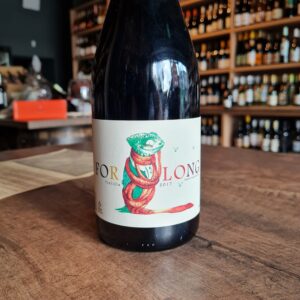 Fourth project of Bodegas Forlong (Cádiz). Vineyard consists of albariza soils in the Pago de “el Forlon” in Balbaina Baja, located in the coastal area of Puerto de Santa Maria, 7 km from the sea. Takes advantage of the proximity of the sea, and the purity of the albariza, as well as the local salt-peters which impart saline, chalky character to the grapes. The Tintilla de Rota grape, a native variety of the area, already existed on the farm along with the rest of the grapes, but they did not give it any value at the beginning, to the point that the first year they even gave it away. Once they discovered its potential "we almost pulled our hair at the thought that we had been giving it away." Has limited production of 2700 Bottles. As it is a native variety, they wanted to reflect it in some way on the label, and what better way than to put a native animal like the chameleon, which needs albariza soils that are easy to move to bury its eggs. Their long and rolled tongue is a reflection of Rocío and Alejandro's adventure of "rolling the blanket over their heads" when making a quality organic wine with Tintilla de Rota. Its vinification is carried out in clay jars, thus being a different wine. Pair it with entrecote steak, slow-cooked lamb, suckling pig, BBQ and grilled meats, porcini mushrooms, Jerusalem artichokes, hard cheeses, olives, jamón de pata negra.
Fourth project of Bodegas Forlong (Cádiz). Vineyard consists of albariza soils in the Pago de “el Forlon” in Balbaina Baja, located in the coastal area of Puerto de Santa Maria, 7 km from the sea. Takes advantage of the proximity of the sea, and the purity of the albariza, as well as the local salt-peters which impart saline, chalky character to the grapes. The Tintilla de Rota grape, a native variety of the area, already existed on the farm along with the rest of the grapes, but they did not give it any value at the beginning, to the point that the first year they even gave it away. Once they discovered its potential "we almost pulled our hair at the thought that we had been giving it away." Has limited production of 2700 Bottles. As it is a native variety, they wanted to reflect it in some way on the label, and what better way than to put a native animal like the chameleon, which needs albariza soils that are easy to move to bury its eggs. Their long and rolled tongue is a reflection of Rocío and Alejandro's adventure of "rolling the blanket over their heads" when making a quality organic wine with Tintilla de Rota. Its vinification is carried out in clay jars, thus being a different wine. Pair it with entrecote steak, slow-cooked lamb, suckling pig, BBQ and grilled meats, porcini mushrooms, Jerusalem artichokes, hard cheeses, olives, jamón de pata negra. -
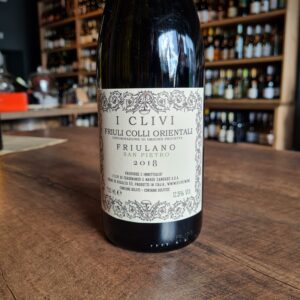 The wines of i Clivi are born in Friuli in between the Collio Goriziano and the eastern hills of Udine, named Colli Orientali, where, on sunny slopes – clivi meaning “slopes” – Altogether there is cultivated 12 hectares of certified organic vineyards planted with the indigenous varieties Ribolla, Friulano, Verduzzo, and Malvasia, whose only international grape is Merlot, a variety which found home in this area more than a century ago. Taking care of this important heritage of old vines, aged between 60 and 80 years, it is for Ferdinando and Mario Zanusso a reminder of the responsibility with which they guard and produce wine on this strip of land, giving the chance to express two distinct D.O.C. denominations, Collio, and Colli Orientali del Friuli, whose sensory difference is related exclusively to the microclimate. The low yields produced by these old vines give a natural concentration and complexity to the fruit they seek to transform naturally with spontaneous fermentation, maintaining the elegance and aromatic integrity through careful maturation in steel tanks for 50,000 bottles of varietal wines with great personality, distinguished grace, and delicacy.
The wines of i Clivi are born in Friuli in between the Collio Goriziano and the eastern hills of Udine, named Colli Orientali, where, on sunny slopes – clivi meaning “slopes” – Altogether there is cultivated 12 hectares of certified organic vineyards planted with the indigenous varieties Ribolla, Friulano, Verduzzo, and Malvasia, whose only international grape is Merlot, a variety which found home in this area more than a century ago. Taking care of this important heritage of old vines, aged between 60 and 80 years, it is for Ferdinando and Mario Zanusso a reminder of the responsibility with which they guard and produce wine on this strip of land, giving the chance to express two distinct D.O.C. denominations, Collio, and Colli Orientali del Friuli, whose sensory difference is related exclusively to the microclimate. The low yields produced by these old vines give a natural concentration and complexity to the fruit they seek to transform naturally with spontaneous fermentation, maintaining the elegance and aromatic integrity through careful maturation in steel tanks for 50,000 bottles of varietal wines with great personality, distinguished grace, and delicacy. -
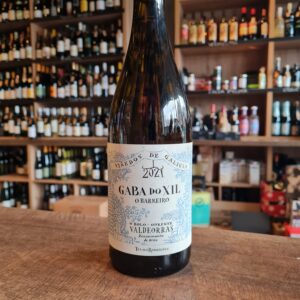 This slinky, mineral white hails from Valdeorras (“Valley of Gold”) in eastern Galicia, a region once famous for goldmining and now best known for its unique and complex wines made from the indigenous Godello grape. The wine is named for the river Sil that flows through the region (Xil is its ancient name, used by the Celtic people who once inhabited the area). Many of the river’s tributaries are flanked on either side by vineyards, planted in terraces on steep slate hillsides. The label displays a dozen bridges, symbolizing the idea of crossing from one vineyard plot to another. Gaba do Xil Godello is produced partially from grapes that are partially estate-grown and partially sourced from long-term suppliers. They come from 4 plots (O Val Grande, O Rasedo, A Torgueira, and O Valverde) located near the Bibei tributary, close to the town of Santa Cruz. Dotted with chestnut trees mixed with rockrose, the old granitic terraces barely have enough space to squeeze in the odd row of vines, following the folds of the mountains that plunge into the river. The vines grow in shallow, stony granite soils on terraces facing south, west and northwest. These coarse soils are low fertility and have low water retention capacity, forcing the vines to struggle and limiting yields. This Godello, is unoaked, gentle, restrained and precise which is dry and soft with a touch of godello's distinctive minerally citrus fruit, absoloutly perfect with light sea food dishes. Excellent value
This slinky, mineral white hails from Valdeorras (“Valley of Gold”) in eastern Galicia, a region once famous for goldmining and now best known for its unique and complex wines made from the indigenous Godello grape. The wine is named for the river Sil that flows through the region (Xil is its ancient name, used by the Celtic people who once inhabited the area). Many of the river’s tributaries are flanked on either side by vineyards, planted in terraces on steep slate hillsides. The label displays a dozen bridges, symbolizing the idea of crossing from one vineyard plot to another. Gaba do Xil Godello is produced partially from grapes that are partially estate-grown and partially sourced from long-term suppliers. They come from 4 plots (O Val Grande, O Rasedo, A Torgueira, and O Valverde) located near the Bibei tributary, close to the town of Santa Cruz. Dotted with chestnut trees mixed with rockrose, the old granitic terraces barely have enough space to squeeze in the odd row of vines, following the folds of the mountains that plunge into the river. The vines grow in shallow, stony granite soils on terraces facing south, west and northwest. These coarse soils are low fertility and have low water retention capacity, forcing the vines to struggle and limiting yields. This Godello, is unoaked, gentle, restrained and precise which is dry and soft with a touch of godello's distinctive minerally citrus fruit, absoloutly perfect with light sea food dishes. Excellent value -
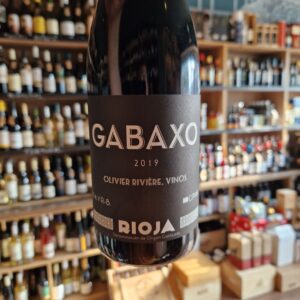
Rioja Gabaxo Olivier Riviere Biodynamic Wine, Wild yeast, French oak Maturation, full bodied but beautifully fresh and balanced. No new oak in Gabacho, but loads of classy Rioja character and sheer drinkability! Gabacho does see some wood, a small amount of old french barrels are used for ageing up to a year. This adds no flavour but helps to soften the wine slightly. This really is lovely stuff, rich but very fresh and balanced red wine with a touch of the dark and brooding about it and a touch of the animal too. It benefits from decanting and also from good bottle ageing. Try it, it will change your mind about Rioja
-
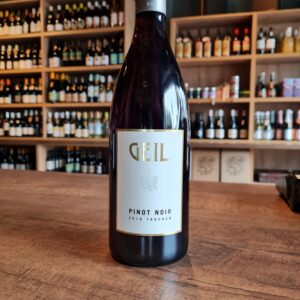 Weingut J. Geil is a winery making approachable, quaffable wines, all along the lines of greatly respecting the nature. This reflects in quality of their fruit and subsequently in their wines. Awarded many trophies each year, Weingut Geil belongs among some of the top German producers. There is nothing to be take lightly about their Pinot Noir, a serious, serious wine. Beautifully earthy and soft, with plenty of ripe wild berries. Excellent balance and considerable length. Accessible and juicy, yet wholeheartedly deep genuinely expressing the terroir of Bechtheim
Weingut J. Geil is a winery making approachable, quaffable wines, all along the lines of greatly respecting the nature. This reflects in quality of their fruit and subsequently in their wines. Awarded many trophies each year, Weingut Geil belongs among some of the top German producers. There is nothing to be take lightly about their Pinot Noir, a serious, serious wine. Beautifully earthy and soft, with plenty of ripe wild berries. Excellent balance and considerable length. Accessible and juicy, yet wholeheartedly deep genuinely expressing the terroir of Bechtheim -
Out of stock
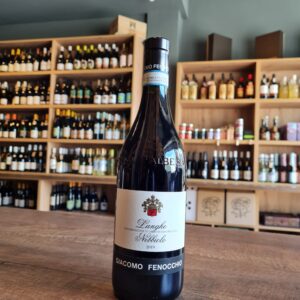 Since 1864, five generations of the Fenocchio family have been producing wine in the heart of Barolo - most of them born in the same yellow house in Monforte d’Alba, at the top of a hillside covered in Nebbiolo grapes. Claudio Fenocchio took upon his father teachings and instead of modernazing the Barolo winemaking techniques, he and with the support of his brothers decided to keep the tradition and build on it. Fenocchio has not taken up organic or biodynamic farming methods but, on the other hand, the estate never took to chemical fertilisers or herbicides, so diverse ground cover and natural predators protect the vines, which grow at their own pace. And in the winery, fermentation is similarly driven by nature and the local microflora. Technically, Claudio has found a way of producing wines which have approachable fruit when young, yet built around a strong tannic structure which does not overwhelm early on, but encourages the development of the wine over years. It is partly due to some green harvesting and careful selection, partly due to enzymatic reaction (ironically) during the long fermentation, which melds the fruit and tannin seamlessly. Barolos are aged for five months in stainless Slovenian oak and a further year in the bottle before release. steel, two years in Slovenian oak and a further year in the bottle before release. More than defining itself as traditional or modern Barolo, Giacomo Fenocchio wine is an expression of terroir.
Since 1864, five generations of the Fenocchio family have been producing wine in the heart of Barolo - most of them born in the same yellow house in Monforte d’Alba, at the top of a hillside covered in Nebbiolo grapes. Claudio Fenocchio took upon his father teachings and instead of modernazing the Barolo winemaking techniques, he and with the support of his brothers decided to keep the tradition and build on it. Fenocchio has not taken up organic or biodynamic farming methods but, on the other hand, the estate never took to chemical fertilisers or herbicides, so diverse ground cover and natural predators protect the vines, which grow at their own pace. And in the winery, fermentation is similarly driven by nature and the local microflora. Technically, Claudio has found a way of producing wines which have approachable fruit when young, yet built around a strong tannic structure which does not overwhelm early on, but encourages the development of the wine over years. It is partly due to some green harvesting and careful selection, partly due to enzymatic reaction (ironically) during the long fermentation, which melds the fruit and tannin seamlessly. Barolos are aged for five months in stainless Slovenian oak and a further year in the bottle before release. steel, two years in Slovenian oak and a further year in the bottle before release. More than defining itself as traditional or modern Barolo, Giacomo Fenocchio wine is an expression of terroir. -
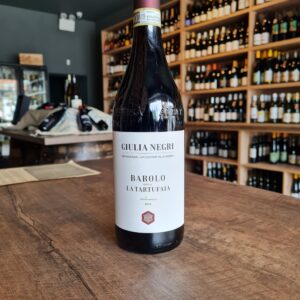 Giulia Negri is a young talent that goes by the nickname "Barolo girl" in the wine world. The grapes for this archetype of a modern-traditional Barolo come from the top vineyards Brunate and Serradenari, the latter is located at an altitude of up to 520 m, and the soils are clayey-sandy. It is an area with a particularly cool and breezy microclimate, which is reflected in the elegant profile of the wines. Climbing towards the top of the hill, the soils become increasingly rich in sandy veins and limestone marl, which contribute to giving Barolo an extreme expressive refinement. The high quality grapes, a work in the cellar that is very respectful of the raw material and aimed at enhancing the typical characteristics of the terroir, allow the creation of a Barolo faithful to the land of origin. Dressed to impress, savory red with a fine fragrance on the palate that doesn't deny its origin and the grape variety, it is of an almost unique elegance and freshness that allows it to be identified as a lively and completely complete top wine even when young. Further years of maturity are certainly not a mistake, because one feels impressively how the complexity increasing with the age joins the finesse and elegance already unmistakable today. One bottle for now and don't put the rest too far away in the cellar, please!
Giulia Negri is a young talent that goes by the nickname "Barolo girl" in the wine world. The grapes for this archetype of a modern-traditional Barolo come from the top vineyards Brunate and Serradenari, the latter is located at an altitude of up to 520 m, and the soils are clayey-sandy. It is an area with a particularly cool and breezy microclimate, which is reflected in the elegant profile of the wines. Climbing towards the top of the hill, the soils become increasingly rich in sandy veins and limestone marl, which contribute to giving Barolo an extreme expressive refinement. The high quality grapes, a work in the cellar that is very respectful of the raw material and aimed at enhancing the typical characteristics of the terroir, allow the creation of a Barolo faithful to the land of origin. Dressed to impress, savory red with a fine fragrance on the palate that doesn't deny its origin and the grape variety, it is of an almost unique elegance and freshness that allows it to be identified as a lively and completely complete top wine even when young. Further years of maturity are certainly not a mistake, because one feels impressively how the complexity increasing with the age joins the finesse and elegance already unmistakable today. One bottle for now and don't put the rest too far away in the cellar, please! -
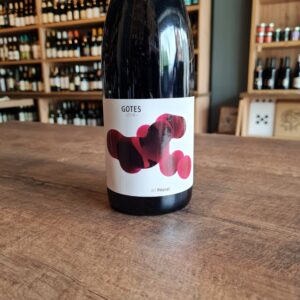 Gotes was the last to be incorporated into the Portal del Priorat's wine family, the Alfredo Arribas project in this denomination, and was envisioned to highlight the freshness of Priorat wines; gotes (drops) of freshness, like dewdrops. Don't expect to find in Gotes the more usual Priorat typicity, with profound maturity and intense minerality. Gotes reflects another type of Priorat wine, refined, in the French style (we mean 'French' as in Burgundy), with a fresh and floral profile. The typicity of Gotes is rooted in the countryside, in its notes of aromatic plants, and in that delightful warmth, because although fresh it is Mediterranean. Another special feature of Gotes is the polish and attention to detail it emits; it's an elegant wine; it has clearly been crafted by experts. If Gotes is refined on the nose, it's positively explosive on the palate! It grows and grows, with lots of volume and a very seductive sweetness and velvety texture. Gotes is fruit, but a very varied fruit cocktail: red fruits, black fruits, both fresh and jammy, the odd juicy stone fruit like mango (the Garnacha always leaves its mark) and fresh grapes that provide a citrusy touch. Ideal with dishes of a upper middle power taste. Will be excellent with a salad of figs and duck ham with Parmesan shavings. It will also be great taking with red meats, duck breast grilled or thigh kid with cider and soft alioli.
Gotes was the last to be incorporated into the Portal del Priorat's wine family, the Alfredo Arribas project in this denomination, and was envisioned to highlight the freshness of Priorat wines; gotes (drops) of freshness, like dewdrops. Don't expect to find in Gotes the more usual Priorat typicity, with profound maturity and intense minerality. Gotes reflects another type of Priorat wine, refined, in the French style (we mean 'French' as in Burgundy), with a fresh and floral profile. The typicity of Gotes is rooted in the countryside, in its notes of aromatic plants, and in that delightful warmth, because although fresh it is Mediterranean. Another special feature of Gotes is the polish and attention to detail it emits; it's an elegant wine; it has clearly been crafted by experts. If Gotes is refined on the nose, it's positively explosive on the palate! It grows and grows, with lots of volume and a very seductive sweetness and velvety texture. Gotes is fruit, but a very varied fruit cocktail: red fruits, black fruits, both fresh and jammy, the odd juicy stone fruit like mango (the Garnacha always leaves its mark) and fresh grapes that provide a citrusy touch. Ideal with dishes of a upper middle power taste. Will be excellent with a salad of figs and duck ham with Parmesan shavings. It will also be great taking with red meats, duck breast grilled or thigh kid with cider and soft alioli. -
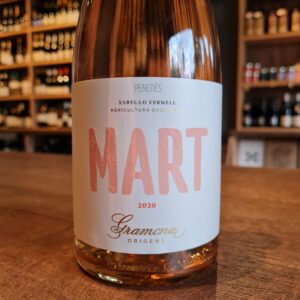 Biodynamic Rosé made from pink skinned Xarel.lo – a variety indigenous to the Penedès region that has been brought back from the brink of extinction. Mediterranean fruits and herbs. Delicate and complex. Recommended spicy dishes such as those found in Japanese, Nikkei, Caribbean and South American cuisine. Rice dishes and seafood. Excellent for aperitifs.
Biodynamic Rosé made from pink skinned Xarel.lo – a variety indigenous to the Penedès region that has been brought back from the brink of extinction. Mediterranean fruits and herbs. Delicate and complex. Recommended spicy dishes such as those found in Japanese, Nikkei, Caribbean and South American cuisine. Rice dishes and seafood. Excellent for aperitifs. -
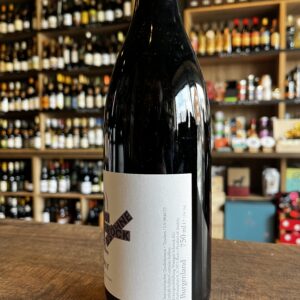
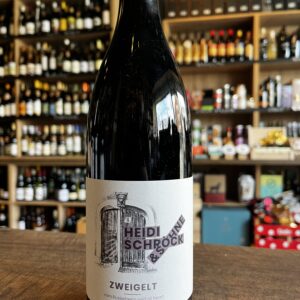 Heidi took over her family’s 10 hectare estate in 1983, in the famous village of Rust, Burgenland, just five miles from the Hungarian border. Her south-east-facing vineyards along the western banks of Lake Neusiedl form a semi-amphitheatre, providing considerably more sunlight hours compared to the rest of Austria. The soils here are sandy with clay, gravel, grey quartz and schist. Heidi sustainably cultivates the classic Austrian varieties, Zweigelt, Blaufränkisch and St Laurent, as well as pioneering the revival of traditional varieties, such as Furmint, better known today across the Hungarian border. Heidi, Georg and Johannes. One woman, two young men. Mother and sons. In an ancient winegrower´s estate in the center of the renowned Freistadt Rust, the vinophile trio produces some of the most sought after white, rosé, red and sweet wines made in Austria - principally from autochthonus varieties of the region. The shining stars of the company, Schröck sweet wines, have represented the house for many years. Liquid elegance dressed in gold. Heidi Schröck & Söhne. A small, fine established company with big, aspiring ideas. Open, inspired, passionate. And pretty delicious
Heidi took over her family’s 10 hectare estate in 1983, in the famous village of Rust, Burgenland, just five miles from the Hungarian border. Her south-east-facing vineyards along the western banks of Lake Neusiedl form a semi-amphitheatre, providing considerably more sunlight hours compared to the rest of Austria. The soils here are sandy with clay, gravel, grey quartz and schist. Heidi sustainably cultivates the classic Austrian varieties, Zweigelt, Blaufränkisch and St Laurent, as well as pioneering the revival of traditional varieties, such as Furmint, better known today across the Hungarian border. Heidi, Georg and Johannes. One woman, two young men. Mother and sons. In an ancient winegrower´s estate in the center of the renowned Freistadt Rust, the vinophile trio produces some of the most sought after white, rosé, red and sweet wines made in Austria - principally from autochthonus varieties of the region. The shining stars of the company, Schröck sweet wines, have represented the house for many years. Liquid elegance dressed in gold. Heidi Schröck & Söhne. A small, fine established company with big, aspiring ideas. Open, inspired, passionate. And pretty delicious -
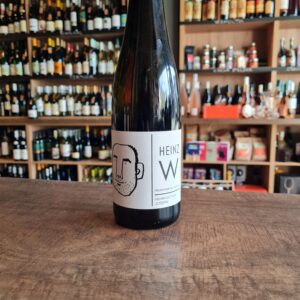 Grüner Veltliner is Austria's most famous grape variety and is considered Austria's national grape variety. The best Grüner Veltliner wines come from the northeast of the country, especially regions such as the Wachau, Kamptal and Kremstal bordering the Danube River. This wine made by Weingut Weixelbaum the winery of Heinz and Gabi Weixelbaum. Located in the village of Strasser in the Austrian Kamptal. It is a medium sized, typical Austrian winery. A family business that is passed on from generation to generation. Heinz Weixelbaum has very good vineyards on soils of 'urgestein' and 'loess', Heinz also dares to prune a lot in the spring, so that his wines are more powerful than most from the region. The Weixelbaum family only makes wine from grapes from its own 22 hectares of vineyards. Everything is done by hand and the cellar is full of the most modern equipment. The vineyards in the Kamptal owe their name to the river Kamp that flows through the area. It is one of the most prestigious Austrian wine districts. In this wine-growing region, which is part of the federal state of Lower Austria, warm and sunny summer days ensure optimal ripening of the grapes. In addition, a cooling breeze during the night guarantees flawless aromas and refined acids in the wines. The vineyards are mainly terraced along the steep banks of the river. The soil consists largely of loess, loam, gravel, sandstone and shale. Because the roots of the vines can reach up to six meters deep, the wines get a different character on every surface.
Grüner Veltliner is Austria's most famous grape variety and is considered Austria's national grape variety. The best Grüner Veltliner wines come from the northeast of the country, especially regions such as the Wachau, Kamptal and Kremstal bordering the Danube River. This wine made by Weingut Weixelbaum the winery of Heinz and Gabi Weixelbaum. Located in the village of Strasser in the Austrian Kamptal. It is a medium sized, typical Austrian winery. A family business that is passed on from generation to generation. Heinz Weixelbaum has very good vineyards on soils of 'urgestein' and 'loess', Heinz also dares to prune a lot in the spring, so that his wines are more powerful than most from the region. The Weixelbaum family only makes wine from grapes from its own 22 hectares of vineyards. Everything is done by hand and the cellar is full of the most modern equipment. The vineyards in the Kamptal owe their name to the river Kamp that flows through the area. It is one of the most prestigious Austrian wine districts. In this wine-growing region, which is part of the federal state of Lower Austria, warm and sunny summer days ensure optimal ripening of the grapes. In addition, a cooling breeze during the night guarantees flawless aromas and refined acids in the wines. The vineyards are mainly terraced along the steep banks of the river. The soil consists largely of loess, loam, gravel, sandstone and shale. Because the roots of the vines can reach up to six meters deep, the wines get a different character on every surface. -
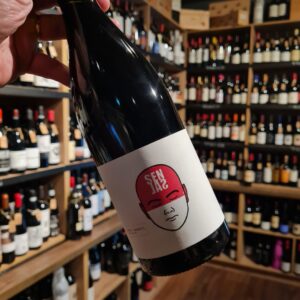 Javier Revert Viticultor is the personal project of Javi Revert, oenologist and part of the technical team of Celler del Roure since 2009. It all started in 2014, when Javier started to recover a vineyard planted by his great-grandfather in the highest area of Font de la Figuera, an area influenced by the Mediterranean character and the harsh winter of La Mancha. It was in the 2016 vintage when their first wines were launched. Javier Revert is one of the young winemakers who tries to interpret the landscape, looking for the best orientations, recovering abandoned vineyards and planting new ones with historical varieties from the area. Javier Revert Sensal is a red wine made with Red Grenache and Monastrell from a 0.8-hectare vineyard with the same name planted in 1965 at 700 metres of altitude on clayey, fresh and slightly clayey soils. Rice dishes, White meats, Charcuterie, Red meat
Javier Revert Viticultor is the personal project of Javi Revert, oenologist and part of the technical team of Celler del Roure since 2009. It all started in 2014, when Javier started to recover a vineyard planted by his great-grandfather in the highest area of Font de la Figuera, an area influenced by the Mediterranean character and the harsh winter of La Mancha. It was in the 2016 vintage when their first wines were launched. Javier Revert is one of the young winemakers who tries to interpret the landscape, looking for the best orientations, recovering abandoned vineyards and planting new ones with historical varieties from the area. Javier Revert Sensal is a red wine made with Red Grenache and Monastrell from a 0.8-hectare vineyard with the same name planted in 1965 at 700 metres of altitude on clayey, fresh and slightly clayey soils. Rice dishes, White meats, Charcuterie, Red meat -
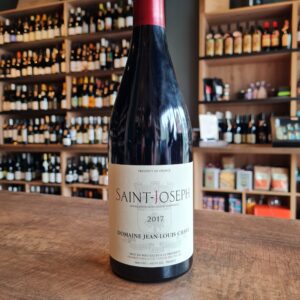 Since 1481, the Chave family has been lording the soils of the Hermitage. Probably they are amongst the best visionaries and observers of the French wines in general. The vineyards are cultivated organically, with methods that favor very low yields and full ripeness, followed by minimal intervention in the winemaking process. The family's pride and joy is the Syrah planted on the fabled hill of Hermitage, but their wines from Saint-Joseph, a small nearby village devoted to the same grape, are a close second and represent distinct value. Syrah here doesn't taste like the bombastic syrah of California or Australia; rather, it's smoky, savory, and tastes like blackberries and black pepper.
Since 1481, the Chave family has been lording the soils of the Hermitage. Probably they are amongst the best visionaries and observers of the French wines in general. The vineyards are cultivated organically, with methods that favor very low yields and full ripeness, followed by minimal intervention in the winemaking process. The family's pride and joy is the Syrah planted on the fabled hill of Hermitage, but their wines from Saint-Joseph, a small nearby village devoted to the same grape, are a close second and represent distinct value. Syrah here doesn't taste like the bombastic syrah of California or Australia; rather, it's smoky, savory, and tastes like blackberries and black pepper. -
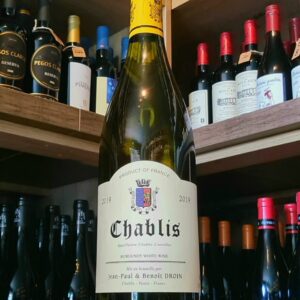 Benoît Droin is one of the most respected winemakers in Chablis. This is the entry point to his range; it highlights the potential of “lesser” wines from top producers. It’s from two parcels, both on Portlandian limestone on the plateau above the Grands Crus. Balanced approach pest control. Soils maintained via regular ploughing. The soils are generally shallow. The sub-soil alternates between grey marl and bands of limestone sometimes very rich in "exogyra virgula" fossils - small, comma-shaped oysters characteristic of the marls from the Upper and Middle Kimmeridgian periods. Winemaking is entirely in steel, preserving the crystalline fruit and bright purity. The 2019 vintage adds a little more ripeness to the fruit on the nose, bringing aromas of white melon and hazelnut. The palate is generous on entry, with cleansing acidity and a gently smoky, mineral finish. This is excellent value and will outdo many “grander” wines. Pair it with aperitif, grilled seafood, baked white fish or Oysters
Benoît Droin is one of the most respected winemakers in Chablis. This is the entry point to his range; it highlights the potential of “lesser” wines from top producers. It’s from two parcels, both on Portlandian limestone on the plateau above the Grands Crus. Balanced approach pest control. Soils maintained via regular ploughing. The soils are generally shallow. The sub-soil alternates between grey marl and bands of limestone sometimes very rich in "exogyra virgula" fossils - small, comma-shaped oysters characteristic of the marls from the Upper and Middle Kimmeridgian periods. Winemaking is entirely in steel, preserving the crystalline fruit and bright purity. The 2019 vintage adds a little more ripeness to the fruit on the nose, bringing aromas of white melon and hazelnut. The palate is generous on entry, with cleansing acidity and a gently smoky, mineral finish. This is excellent value and will outdo many “grander” wines. Pair it with aperitif, grilled seafood, baked white fish or Oysters -
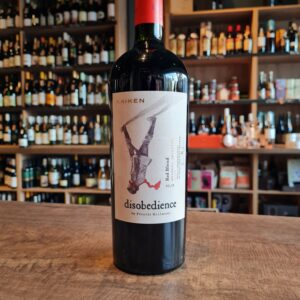 This wine celebrates a collaboration of many years between well-known Argentinian chef Francis Mallmann and Kaiken estate. Known for his distinct style of open fire cooking, ably captured in the first season of Netflix’s Chef’s Table, Mallman's unstoppable and unique nature is captured by the name 'Disobedience'. Kaikenes are wild geese, native to Patagonia, that fly across the Andes between Chile and Argentina. Montes, the Chilean winery, crossed the Andes in the same way to set up in Mendoza. Their vineyards are situated in the heart of Mendoza and further to the south in Valle de Uco, where many of the premium producers are now sourcing their fruit. The focus is primarily on Malbec and Cabernet Sauvignon, a variety that has been somewhat forgotten as Malbec has surfed one wave of success after another in the past decade. Kaiken's own vineyards supply 70% of their production requirements and 30% is from vineyards that they control. The grapes are sourced from Kaiken's vineyards in Altamira in the Uco Valley and Vistalba in the Luján de Cuyo region. Vistalba's chalk and sandy soil, at 1,200m altitude, imparts an elegant and fruit-driven character to the wine.The alluvial and loam soil of the Luján de Cuyo forces vines to penetrate deep into the soil, contributing deep fruit concentration and tannin. As Francis Mallmann says, wine is a celebration. And this is a wine created to celebrate friendship, love, reunion... And celebrate an act of freedom, no one can decide how to do it.
This wine celebrates a collaboration of many years between well-known Argentinian chef Francis Mallmann and Kaiken estate. Known for his distinct style of open fire cooking, ably captured in the first season of Netflix’s Chef’s Table, Mallman's unstoppable and unique nature is captured by the name 'Disobedience'. Kaikenes are wild geese, native to Patagonia, that fly across the Andes between Chile and Argentina. Montes, the Chilean winery, crossed the Andes in the same way to set up in Mendoza. Their vineyards are situated in the heart of Mendoza and further to the south in Valle de Uco, where many of the premium producers are now sourcing their fruit. The focus is primarily on Malbec and Cabernet Sauvignon, a variety that has been somewhat forgotten as Malbec has surfed one wave of success after another in the past decade. Kaiken's own vineyards supply 70% of their production requirements and 30% is from vineyards that they control. The grapes are sourced from Kaiken's vineyards in Altamira in the Uco Valley and Vistalba in the Luján de Cuyo region. Vistalba's chalk and sandy soil, at 1,200m altitude, imparts an elegant and fruit-driven character to the wine.The alluvial and loam soil of the Luján de Cuyo forces vines to penetrate deep into the soil, contributing deep fruit concentration and tannin. As Francis Mallmann says, wine is a celebration. And this is a wine created to celebrate friendship, love, reunion... And celebrate an act of freedom, no one can decide how to do it. -
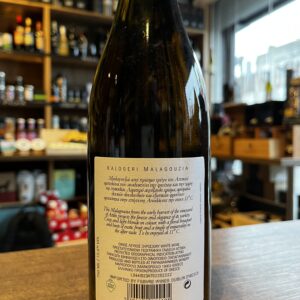
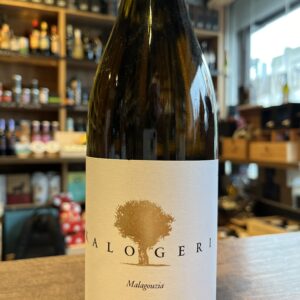 Domaine Papagiannakos was established in 1919 in the heart of the plain of Mesogaia, Attica - just 30km from the shadow of the Acropolis. Third generation winemaker, Vassilis Papagiannakos, was born and bred in Markopoulo, and grew up around the family winery. At that time the Savatiano variety was the winery' s sole focus - but later Malagouzia was introduced, along with Cabernet Sauvignon, Merlot and other varieties. Vassilis owns 10 hectares of vineyard in the Attica region, and maintains long-term leases on a further 20 hectares, with vines on average 50-60 years old. Rocky, sandy, clay topsoil nurtures low yielding bush vines - extremely limited irrigation is employed. The Papagiannakos family continues its traditions whilst bringing the winery into the 21st Century with a stunning and innovative bioclimatic winery. Pair it with Fish Fried, Poultry Casseroles White, Risotto
Domaine Papagiannakos was established in 1919 in the heart of the plain of Mesogaia, Attica - just 30km from the shadow of the Acropolis. Third generation winemaker, Vassilis Papagiannakos, was born and bred in Markopoulo, and grew up around the family winery. At that time the Savatiano variety was the winery' s sole focus - but later Malagouzia was introduced, along with Cabernet Sauvignon, Merlot and other varieties. Vassilis owns 10 hectares of vineyard in the Attica region, and maintains long-term leases on a further 20 hectares, with vines on average 50-60 years old. Rocky, sandy, clay topsoil nurtures low yielding bush vines - extremely limited irrigation is employed. The Papagiannakos family continues its traditions whilst bringing the winery into the 21st Century with a stunning and innovative bioclimatic winery. Pair it with Fish Fried, Poultry Casseroles White, Risotto -
Out of stock
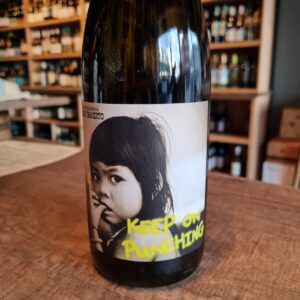 Keep On Punching is Swartland Chenin, but not in the conventional sense. No buttery oak, this is all 100% stainless steel tank to keep that citrus twang just as clean as a whistle. Stylistically this wine fits more closely with the Chenins of the Loire valley - the fruit is apple and pear with some nice zippy white peach. The grapes come from old bush vines that yield small clusters of grapes with great concentration and acidity year on year. Craig's wines have a keen following, and for good reason.After travelling extensively in Portugal and Austria learning his craft, Craig Hawkins returned to South Africa and became the winemaker at top Swartland estate Lammershoek. Craig now makes his own wines from various small, organic vineyard sites in Swartland and makes his wine naturally, with as little intervention as possible.If you like a bit of skin contact (& don't we all), try this!
Keep On Punching is Swartland Chenin, but not in the conventional sense. No buttery oak, this is all 100% stainless steel tank to keep that citrus twang just as clean as a whistle. Stylistically this wine fits more closely with the Chenins of the Loire valley - the fruit is apple and pear with some nice zippy white peach. The grapes come from old bush vines that yield small clusters of grapes with great concentration and acidity year on year. Craig's wines have a keen following, and for good reason.After travelling extensively in Portugal and Austria learning his craft, Craig Hawkins returned to South Africa and became the winemaker at top Swartland estate Lammershoek. Craig now makes his own wines from various small, organic vineyard sites in Swartland and makes his wine naturally, with as little intervention as possible.If you like a bit of skin contact (& don't we all), try this! -
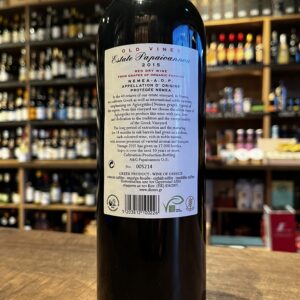
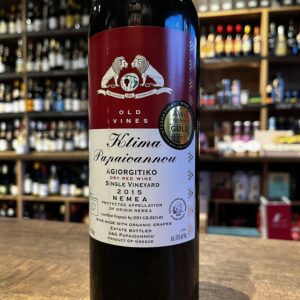 Thanasis Papaioannou was regarded as one of the most important figures of modern Greek winemaking. His belief is a combination of indigenous varieties and organic viticulture are the vital ingredients to produce balanced wines reflecting the terroir. Today, his son works with 57 hectares of organically certified vineyards, located in the Nemea region of the Peloponnese. The wines demonstrating real character at exceptional prices. Nemea is arguably Greece's most important red-wine region, located in the northeastern corner of the Peloponnese peninsula. The village of Nemea is around 20 miles (35km) southwest of Corinth, and the appellation that surrounds the village is geographically the largest in Greece. Around 40 wineries are located there and the area has seen a huge amount of investment and growth over the past few decades. The surrounding mountains and valleys have been producing wine for centuries. Agiorgitiko is an ancient Greek grape variety mostly planted in Nemea, named for the small St George's Church found within the boundaries of the appellation: Agiorgitiko translates as "St George's grape“. A wide range of styles are made from this red grape variety, from lighter, fruitier wines to rich, age-worthy examples such as this. The label references the ‘Lion of Nemea’; a creature of Greek legend, killed by Heracles. Their Old Vines cuvée is made from the estate's oldest Agiorgitiko vines. This dish with duck breast, Brussels sprouts with bacon and Polenta is a perfect partner for the Old Vines from Papaioannou, where the black cherry note is an ideal combination.
Thanasis Papaioannou was regarded as one of the most important figures of modern Greek winemaking. His belief is a combination of indigenous varieties and organic viticulture are the vital ingredients to produce balanced wines reflecting the terroir. Today, his son works with 57 hectares of organically certified vineyards, located in the Nemea region of the Peloponnese. The wines demonstrating real character at exceptional prices. Nemea is arguably Greece's most important red-wine region, located in the northeastern corner of the Peloponnese peninsula. The village of Nemea is around 20 miles (35km) southwest of Corinth, and the appellation that surrounds the village is geographically the largest in Greece. Around 40 wineries are located there and the area has seen a huge amount of investment and growth over the past few decades. The surrounding mountains and valleys have been producing wine for centuries. Agiorgitiko is an ancient Greek grape variety mostly planted in Nemea, named for the small St George's Church found within the boundaries of the appellation: Agiorgitiko translates as "St George's grape“. A wide range of styles are made from this red grape variety, from lighter, fruitier wines to rich, age-worthy examples such as this. The label references the ‘Lion of Nemea’; a creature of Greek legend, killed by Heracles. Their Old Vines cuvée is made from the estate's oldest Agiorgitiko vines. This dish with duck breast, Brussels sprouts with bacon and Polenta is a perfect partner for the Old Vines from Papaioannou, where the black cherry note is an ideal combination. -
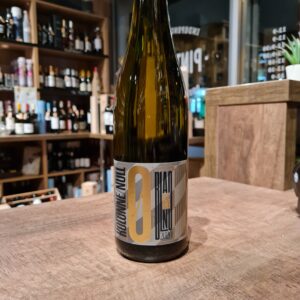 With admirable precision and innovative ideas, the family-run winery Pauly, now in its 3rd generation, succeeds in producing stylish wines with an outstanding character of their own. The winery is not only known for its famous steep slope on the Niederberg-Helden on the Mosel River, but also for the unique slate minerality that gives the wines an elegant, fresh style. The alcohol-free Riesling from Kolonne Null is perfect for all wine enthusiasts who like as little residual sweetness in their wine as possible. Best enjoyed very well chilled at 5 - 7°C. It is perfect as an accompaniment to stir-fried vegetables with fish, omelette with salmon and fennel or vegetable salad with beetroot.
With admirable precision and innovative ideas, the family-run winery Pauly, now in its 3rd generation, succeeds in producing stylish wines with an outstanding character of their own. The winery is not only known for its famous steep slope on the Niederberg-Helden on the Mosel River, but also for the unique slate minerality that gives the wines an elegant, fresh style. The alcohol-free Riesling from Kolonne Null is perfect for all wine enthusiasts who like as little residual sweetness in their wine as possible. Best enjoyed very well chilled at 5 - 7°C. It is perfect as an accompaniment to stir-fried vegetables with fish, omelette with salmon and fennel or vegetable salad with beetroot. -
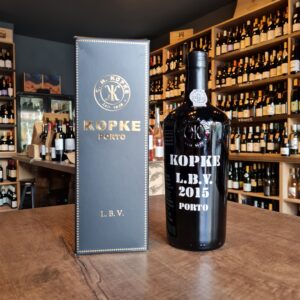 The wine owes its name to the port city of Porto, but comes from the Douro Valley. Here you will find one of the most spectacular wine landscapes in the world with terraced vineyards on steep slopes. It is scorching hot in summer, freezing cold in winter. The Douro Valley was already demarcated in 1756, making it the oldest regulated area of origin in the world. Port itself is a fortified wine. By interrupting the fermentation by adding wine alcohol, the wine retains its residual sugars and also gets its relatively high alcohol percentage. Port does not stand for a single wine, but for a whole series of wines. Wines with very different styles and tastes due to differences in the blending and aging of the base wines. In 1636 Nicolau Kopkë settled in Portugal as 'consul general' (a kind of representative) of the Hanseatic League, a partnership between merchants and cities, during the Middle Ages. Two years later, the first bottles of wine were shipped to Northern Europe. And when Nicolau bought a farm in the Douro in 1781, he changed from buyer to producer. Port wine soon became the focus of the company. Kpke now is one of the oldest Port Wine House. Recognized by the variety and distinction of its Ports, Kopke represents in XXI century a symbol of quality and prestige. LBV stands for Late Bottle Vintage and is the result of single year's harvest of superior quality, aged in oak Vats. Balancing the intensity of flavours, the Late Bottled Vintage Port is the ideal choice to serve with main courses of meat, like filet mignon encrusted four peppers and veal cutlet with Bérnaise sauce. Its versatility knows no borders, being perfect to combine with an exuberant cheesecake of chocolate mint, a pear and chocolate mille-feuille or simply to enjoy with cheeses of medium intensity.
The wine owes its name to the port city of Porto, but comes from the Douro Valley. Here you will find one of the most spectacular wine landscapes in the world with terraced vineyards on steep slopes. It is scorching hot in summer, freezing cold in winter. The Douro Valley was already demarcated in 1756, making it the oldest regulated area of origin in the world. Port itself is a fortified wine. By interrupting the fermentation by adding wine alcohol, the wine retains its residual sugars and also gets its relatively high alcohol percentage. Port does not stand for a single wine, but for a whole series of wines. Wines with very different styles and tastes due to differences in the blending and aging of the base wines. In 1636 Nicolau Kopkë settled in Portugal as 'consul general' (a kind of representative) of the Hanseatic League, a partnership between merchants and cities, during the Middle Ages. Two years later, the first bottles of wine were shipped to Northern Europe. And when Nicolau bought a farm in the Douro in 1781, he changed from buyer to producer. Port wine soon became the focus of the company. Kpke now is one of the oldest Port Wine House. Recognized by the variety and distinction of its Ports, Kopke represents in XXI century a symbol of quality and prestige. LBV stands for Late Bottle Vintage and is the result of single year's harvest of superior quality, aged in oak Vats. Balancing the intensity of flavours, the Late Bottled Vintage Port is the ideal choice to serve with main courses of meat, like filet mignon encrusted four peppers and veal cutlet with Bérnaise sauce. Its versatility knows no borders, being perfect to combine with an exuberant cheesecake of chocolate mint, a pear and chocolate mille-feuille or simply to enjoy with cheeses of medium intensity. -
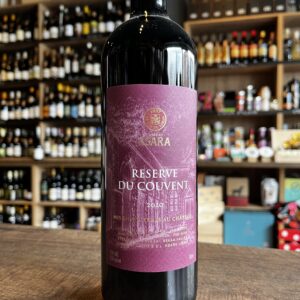 Reserve Du Couvent is the backbone of the Château Ksara range, a ready-to-drink, medium to full-bodied wine, which owes its inspiration to the wines of the Northern Rhone and Bordeaux. Pair it with Sirloin, Lamb and medium strong cheeses. Ksara estate, named so because it was the site of a ksar, or fortress, at the time of the Crusades. The property situated in the heart of the Bekaa Valley, near Baalbeck, was acquired by the Jesuit Fathers in 1857 when it was already famed as a vineyard and they perpetuated the tradition of winemaking. No one really knows for certain when wine was first made in Lebanon, the Phoenician ancestors of today's Lebanese were certainly among the earliest winemakers. Later, in the Greco-Roman era, a wine cult flourished, as the ruins of the Temple of Bacchus at Baalbeck in Lebanon's Bekaa Valley bear eloquent witness. Ksara's natural wine cellar was a grotto discovered by the Romans who consolidated part of the vault and dug several narrow tunnels from the cave into the surrounding chalk. These tunnels were enlarged to their present size during World War I when the Jesuit Fathers sought to alleviate famine in Lebanon by creating employment. One hundred men toiled with picks and shovels for four years to complete an underground network of tunnels stretching for almost two kilometres (about 2,000 yards).The temperature in the tunnels is ideal for wine, varying throughout the year from 11 to 13ºC. Ksara came into the hands of its present owners when the Jesuit Fathers decided to sell the estate in conformity with the directives of the Vatican II synod. Having grown significantly since its foundation, vineyards spread around the Chateau’s complex which includes the winery, a tasting room/restaurant, and Lebanon’s first astronomy/observation tour. Located in the heart of the Bekaa Valley at an average altitude of 1,000 meters, vines grow without pesticides or herbicides. The soil ranges from chalk, to clay and chalk, to clay and limestone, but it is always stony. A fantastic wine that kept its value humble and therefore on the right side of the price comparing to some of other wines found in the area. Enjoy this unique and great find!
Reserve Du Couvent is the backbone of the Château Ksara range, a ready-to-drink, medium to full-bodied wine, which owes its inspiration to the wines of the Northern Rhone and Bordeaux. Pair it with Sirloin, Lamb and medium strong cheeses. Ksara estate, named so because it was the site of a ksar, or fortress, at the time of the Crusades. The property situated in the heart of the Bekaa Valley, near Baalbeck, was acquired by the Jesuit Fathers in 1857 when it was already famed as a vineyard and they perpetuated the tradition of winemaking. No one really knows for certain when wine was first made in Lebanon, the Phoenician ancestors of today's Lebanese were certainly among the earliest winemakers. Later, in the Greco-Roman era, a wine cult flourished, as the ruins of the Temple of Bacchus at Baalbeck in Lebanon's Bekaa Valley bear eloquent witness. Ksara's natural wine cellar was a grotto discovered by the Romans who consolidated part of the vault and dug several narrow tunnels from the cave into the surrounding chalk. These tunnels were enlarged to their present size during World War I when the Jesuit Fathers sought to alleviate famine in Lebanon by creating employment. One hundred men toiled with picks and shovels for four years to complete an underground network of tunnels stretching for almost two kilometres (about 2,000 yards).The temperature in the tunnels is ideal for wine, varying throughout the year from 11 to 13ºC. Ksara came into the hands of its present owners when the Jesuit Fathers decided to sell the estate in conformity with the directives of the Vatican II synod. Having grown significantly since its foundation, vineyards spread around the Chateau’s complex which includes the winery, a tasting room/restaurant, and Lebanon’s first astronomy/observation tour. Located in the heart of the Bekaa Valley at an average altitude of 1,000 meters, vines grow without pesticides or herbicides. The soil ranges from chalk, to clay and chalk, to clay and limestone, but it is always stony. A fantastic wine that kept its value humble and therefore on the right side of the price comparing to some of other wines found in the area. Enjoy this unique and great find! -
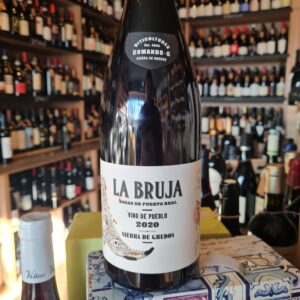 Daniel Landi and Fernando García have been friends since college. Successful winemakers in their own right – Dani at his family’s estate, Bodegas Jimenez-Landi and Fer at Bodega Marañones - in 2008 they started a winemaking project together: Comando G. Along with the pioneers of Priorat, Dani and Fer are redefining Garnacha, previously viewed as a workhorse variety, into something that can rival the elegance and finesse of Burgundian Pinot Noir or Syrah in the northern Rhône. The duo work with several small, isolated plots perched high up in the mountainous Sierra de Gredos to create truly unique, terroir-expressive wines. The vineyards that Daniel and Fernando have assembled are all farmed biodynamically, with vines ranging in age from 50 to 80 years old. According to Wine Advocate writer Luis Gutierrez, "they improve their vineyards from the moment they buy or rent them [...] The quality of their wines is what they strive to improve the most, and the results are there.” In the winery their winemaking is considered and precise, gently coaxing out the delicate balance of fruit character and terroir from each site. It is this commitment to a sense of place, nuance, and finesse that make their wines among the most compelling in Spain.
Daniel Landi and Fernando García have been friends since college. Successful winemakers in their own right – Dani at his family’s estate, Bodegas Jimenez-Landi and Fer at Bodega Marañones - in 2008 they started a winemaking project together: Comando G. Along with the pioneers of Priorat, Dani and Fer are redefining Garnacha, previously viewed as a workhorse variety, into something that can rival the elegance and finesse of Burgundian Pinot Noir or Syrah in the northern Rhône. The duo work with several small, isolated plots perched high up in the mountainous Sierra de Gredos to create truly unique, terroir-expressive wines. The vineyards that Daniel and Fernando have assembled are all farmed biodynamically, with vines ranging in age from 50 to 80 years old. According to Wine Advocate writer Luis Gutierrez, "they improve their vineyards from the moment they buy or rent them [...] The quality of their wines is what they strive to improve the most, and the results are there.” In the winery their winemaking is considered and precise, gently coaxing out the delicate balance of fruit character and terroir from each site. It is this commitment to a sense of place, nuance, and finesse that make their wines among the most compelling in Spain. -
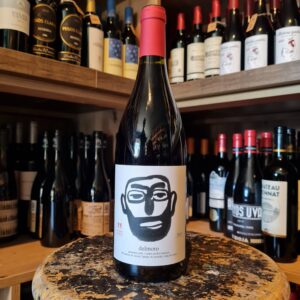 La Comarcal del Moro is part of a collaboration of two friends, Javi Revert and Victor Marqués, who first worked together at Celler del Roure. This wine comes from terroir specific vineyards to express the very best of the varieties they work with. Delmoro is predominantly Garnacha with some Bobal and Syrah in the blend, fermented separately, and aged in stainless steel and oak. All coming from a four hectare single vineyard. Rustic, but seductive, young but with some great lenght and complexity, this wine is not to be underestimated. Goes beautifully with poultry, pork and salmon.
La Comarcal del Moro is part of a collaboration of two friends, Javi Revert and Victor Marqués, who first worked together at Celler del Roure. This wine comes from terroir specific vineyards to express the very best of the varieties they work with. Delmoro is predominantly Garnacha with some Bobal and Syrah in the blend, fermented separately, and aged in stainless steel and oak. All coming from a four hectare single vineyard. Rustic, but seductive, young but with some great lenght and complexity, this wine is not to be underestimated. Goes beautifully with poultry, pork and salmon. -
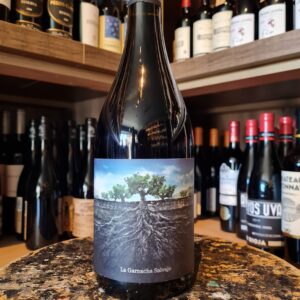 There's a lovely off the beaten track mountain wilderness (salvaje means wild) to this old-vine Garnacha (aka Grenache), one of six under the the creative Vintae's Proyecto Garnachas banner that showcase the grape variety from old vineyards in different areas of the Ebro Valley in northeast Spain. Like Gamay and Zinfandel, the old vines of Grenache are a timeless wonder. They are the Clint Eastwood of vitis vinifera: gnarled by age with a tough-as-nails exterior and no sign of retirement on the horizon. What they lack in quantity, they make up for in quality: grape clusters from old-vine Grenache (think 60-100 years old) can create wines of supple fruit, spicy character and rocket-fueled energy. This one is no exception, the Salvaje vineyards lie on rocky soils at 820m above sea level, on the north face of the Moncayo massif mountain chain, where Navarra and Aragón meet and the Atlantic influence brings mouthwatering freshness and clarity to the generous raspberry, wild herb and pepper flavours this wine induces. It doesn't need food, but it's very accommodating: spot on with roast peppers, aubergine, tomatoes and onions and with spicy sausages such as chorizo. It would be equally good with roast root vegetables, slow-roast lamb or pork, baked spiced duck legs or a ham joint and would make a good barbecue all-rounder.
There's a lovely off the beaten track mountain wilderness (salvaje means wild) to this old-vine Garnacha (aka Grenache), one of six under the the creative Vintae's Proyecto Garnachas banner that showcase the grape variety from old vineyards in different areas of the Ebro Valley in northeast Spain. Like Gamay and Zinfandel, the old vines of Grenache are a timeless wonder. They are the Clint Eastwood of vitis vinifera: gnarled by age with a tough-as-nails exterior and no sign of retirement on the horizon. What they lack in quantity, they make up for in quality: grape clusters from old-vine Grenache (think 60-100 years old) can create wines of supple fruit, spicy character and rocket-fueled energy. This one is no exception, the Salvaje vineyards lie on rocky soils at 820m above sea level, on the north face of the Moncayo massif mountain chain, where Navarra and Aragón meet and the Atlantic influence brings mouthwatering freshness and clarity to the generous raspberry, wild herb and pepper flavours this wine induces. It doesn't need food, but it's very accommodating: spot on with roast peppers, aubergine, tomatoes and onions and with spicy sausages such as chorizo. It would be equally good with roast root vegetables, slow-roast lamb or pork, baked spiced duck legs or a ham joint and would make a good barbecue all-rounder. -
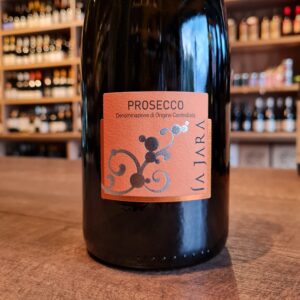 La Jara, based in the heart of Prosecco country just south of Conegliano, make a superb range of organic wines including some excellent Proseccos such as this. Being a frizzante it's got a soft sparkle and in some ways helps the fruit character stand out that bit more. With masses of fine bubbles and flavours of apple, peach, pear and ripe citrus fruits it's a very approachable style that's perhaps a bit too easy to drink. Certainly a step above a lot of other Proseccos. It's freshness makes it a great 'anytime' fizz. It's also really good alongside nibbles like olives, or tortilla chips and dips.
La Jara, based in the heart of Prosecco country just south of Conegliano, make a superb range of organic wines including some excellent Proseccos such as this. Being a frizzante it's got a soft sparkle and in some ways helps the fruit character stand out that bit more. With masses of fine bubbles and flavours of apple, peach, pear and ripe citrus fruits it's a very approachable style that's perhaps a bit too easy to drink. Certainly a step above a lot of other Proseccos. It's freshness makes it a great 'anytime' fizz. It's also really good alongside nibbles like olives, or tortilla chips and dips. -
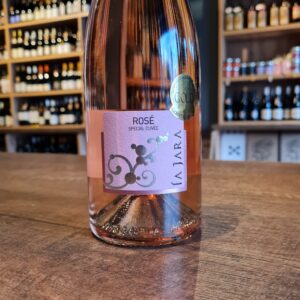 A totally irresistible semi-sparkling organic rosé from our favourite Prosecco producer La Jara, but in this case they use a little bit of the red grape Raboso, to give the wine its lovely pale coral colour. The nose is delicate and fruity, led by aromas of ripe strawberries and raspberries. The palate is fresh and tart, full of gooseberry and redcurrant notes. Try pairing this wine with risotto or pasta, or simply having it as an aperitif. Just for the fun of it, I leave you with a fun fact. The Italians call the string around the bottle a spago. It has no function other than that it looks nice. And that is exactly what makes it a real Italian wine. Beautiful on the inside and beautiful on the outside. A feast to watch and a feast to drink.
A totally irresistible semi-sparkling organic rosé from our favourite Prosecco producer La Jara, but in this case they use a little bit of the red grape Raboso, to give the wine its lovely pale coral colour. The nose is delicate and fruity, led by aromas of ripe strawberries and raspberries. The palate is fresh and tart, full of gooseberry and redcurrant notes. Try pairing this wine with risotto or pasta, or simply having it as an aperitif. Just for the fun of it, I leave you with a fun fact. The Italians call the string around the bottle a spago. It has no function other than that it looks nice. And that is exactly what makes it a real Italian wine. Beautiful on the inside and beautiful on the outside. A feast to watch and a feast to drink. -
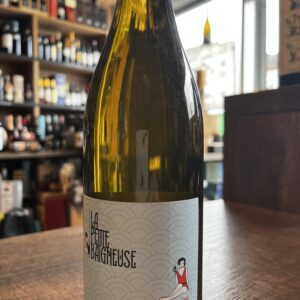 On the border between Roussillon and Corbières, in the heart of the Maury appellation, is the Domaine de la Petite Baigneuse . Philippe Wies, accompanied by his wife Céline, settled at the end of the 2000s, on the superb Maury shale terroirs, at an altitude of 350 meters with breathtaking views of the big blue sea. Surrounded by scrubland and protected by an environment of cliffs, the 14 hectares of vines benefit from a Mediterranean climate tempered by the wind and maritime inlets. Organic since the beginning of the adventure, the Petite Baigneuse estate also practices biodynamics and only works the soil very little. Some plowing is then carried out with a tractor and a tracker so as not to overturn the horizons. Not far from Calce's friends in the people of La Nouvelle Donne , and Domaine Jean-Philippe Padié , Philippe Wies is today an essential figure in the world of natural wines in the south of France. "Juste Ciel", a wine that calls for summer, fresh grilled fish, marinated supions, sea urchins, carpaccio de Saint Jacques.... In short, "La Petite Baigneuse" delivers here a wine to be enjoyed by the poolside with a Mediterranean meal thanks to its delicacy, its freshness and its notes of candied fruits. A very nice white wine to share with a nice meal.
On the border between Roussillon and Corbières, in the heart of the Maury appellation, is the Domaine de la Petite Baigneuse . Philippe Wies, accompanied by his wife Céline, settled at the end of the 2000s, on the superb Maury shale terroirs, at an altitude of 350 meters with breathtaking views of the big blue sea. Surrounded by scrubland and protected by an environment of cliffs, the 14 hectares of vines benefit from a Mediterranean climate tempered by the wind and maritime inlets. Organic since the beginning of the adventure, the Petite Baigneuse estate also practices biodynamics and only works the soil very little. Some plowing is then carried out with a tractor and a tracker so as not to overturn the horizons. Not far from Calce's friends in the people of La Nouvelle Donne , and Domaine Jean-Philippe Padié , Philippe Wies is today an essential figure in the world of natural wines in the south of France. "Juste Ciel", a wine that calls for summer, fresh grilled fish, marinated supions, sea urchins, carpaccio de Saint Jacques.... In short, "La Petite Baigneuse" delivers here a wine to be enjoyed by the poolside with a Mediterranean meal thanks to its delicacy, its freshness and its notes of candied fruits. A very nice white wine to share with a nice meal. -
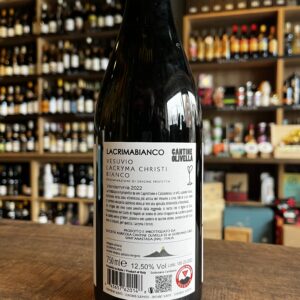
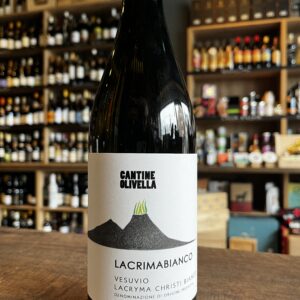 The native roots of the rare and unique grapes found in this ancient yet active volcano and the passion of local talent Andrea Cozzolino that was eager to breathe new life into one of Campania’s most historic wine regions would make Dionysus, god of the wine proud. Here on the slopes of Monte Summa Close to the ''Olivella'' Spring (where the winery takes its name), is the oldest part of Vesuvio (the volcano that destroyed Pompeii and continues to rumble, shaking the nerves of the Napolitani) grape growing is an ancient art, the lava-rich, sandy slopes of the volcano providing perfect terroir for native grapes such as Catalanesca and Piedirosso. In 1974, an ancient fragment of an earthenware wine jug was discovered. This is proof of the wealth of an area whose wines were some of the finest of ancient Rome on the market with Pompeii. An abbreviated inscription of “Sextus Catius Festus” is engraved on the opening of the earthenware jar along with a seal depicting a stylized leaf, similar to a heart. The seal tellingly became the logo for “Cantine Olivella”, and was modified into a wine glass. This is the perfect representation of the union between land, art and passion, namely three hearts beating in unison in the world of Cantine Olivella. Great served chilled as an appetiser or with fresh fish, shellfish; creamy fish soup or risotto
The native roots of the rare and unique grapes found in this ancient yet active volcano and the passion of local talent Andrea Cozzolino that was eager to breathe new life into one of Campania’s most historic wine regions would make Dionysus, god of the wine proud. Here on the slopes of Monte Summa Close to the ''Olivella'' Spring (where the winery takes its name), is the oldest part of Vesuvio (the volcano that destroyed Pompeii and continues to rumble, shaking the nerves of the Napolitani) grape growing is an ancient art, the lava-rich, sandy slopes of the volcano providing perfect terroir for native grapes such as Catalanesca and Piedirosso. In 1974, an ancient fragment of an earthenware wine jug was discovered. This is proof of the wealth of an area whose wines were some of the finest of ancient Rome on the market with Pompeii. An abbreviated inscription of “Sextus Catius Festus” is engraved on the opening of the earthenware jar along with a seal depicting a stylized leaf, similar to a heart. The seal tellingly became the logo for “Cantine Olivella”, and was modified into a wine glass. This is the perfect representation of the union between land, art and passion, namely three hearts beating in unison in the world of Cantine Olivella. Great served chilled as an appetiser or with fresh fish, shellfish; creamy fish soup or risotto -
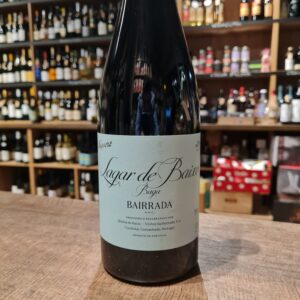 The huge passion of Dirk Niepoort for Baga variety and the fantastic terroir of the Bairrada region led him to look for small parcels of Baga in very old vines, scattered throughout the Cantanhede region, over the past three years. These wines were light in color and alcoholic content, elegant and fine, soon after bottling, but with a huge ageing potential. With the acquisition of the Quinta de Baixo in 2012, it became possible to recreate the Lagar de Baixo brand, moving towards a classically-styled wine which highlights the nobility of Baga grown in Bairrada. The red Lagar de Baixo is the result of a combination of very old vines and younger vines: complex, serious, but with some youth and grip. The 2020 Lagar de Baixo is our most classic wine from Quinta de Baixo and the wine that best reflects the Bairrada terroir. It is fermented in lagares and aged in used barrels. Food Suggestion: Venison dishes (partridge, wild boar), pork and bean stew, baked cod. Vegetarian suggestions: dishes with legumes (red kidney beans, lentils).
The huge passion of Dirk Niepoort for Baga variety and the fantastic terroir of the Bairrada region led him to look for small parcels of Baga in very old vines, scattered throughout the Cantanhede region, over the past three years. These wines were light in color and alcoholic content, elegant and fine, soon after bottling, but with a huge ageing potential. With the acquisition of the Quinta de Baixo in 2012, it became possible to recreate the Lagar de Baixo brand, moving towards a classically-styled wine which highlights the nobility of Baga grown in Bairrada. The red Lagar de Baixo is the result of a combination of very old vines and younger vines: complex, serious, but with some youth and grip. The 2020 Lagar de Baixo is our most classic wine from Quinta de Baixo and the wine that best reflects the Bairrada terroir. It is fermented in lagares and aged in used barrels. Food Suggestion: Venison dishes (partridge, wild boar), pork and bean stew, baked cod. Vegetarian suggestions: dishes with legumes (red kidney beans, lentils). -
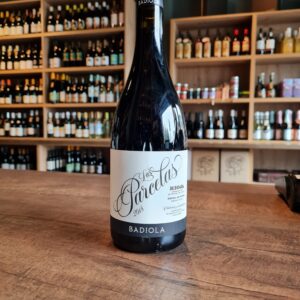 Bodega Badiola, was founded in 2018, part of the Peninsula Vinicultore Group when they bought an old company in the in Rioja Alavesa, the Basque region in the east and south east of Rioja. Their vineyards are situated on the slopes of the Sierra Cantabria, mostly tiny parcels the average size being only 0.3 hectares with an average vine age of 50 years but some of the vines are obviously significantly older. With respect for the environment, minimal spraying of copper and sulphur only are used, so all but Organic. The Las Parcelas comes from 300 carefully selected parcels of old bush Tempranillo vines planted in limestone soils, resulting in elegant wines that are fresh and age worthy due to the balancing acidity. The winemaking philosophy is to keep that purity and freshness by careful use of oak, giving a real point of difference to the traditional oaky Riojas. On the nose and palate, the fruit is very much to the fore with cherry and blackberry fruit with hints of spice and with fresh acidity and almost chalky tannins from that limestone soils. Though it is still young give it some air and it really blossoms, drinking significantly better at dinner rather than lunch when first opened, so will keep well too.
Bodega Badiola, was founded in 2018, part of the Peninsula Vinicultore Group when they bought an old company in the in Rioja Alavesa, the Basque region in the east and south east of Rioja. Their vineyards are situated on the slopes of the Sierra Cantabria, mostly tiny parcels the average size being only 0.3 hectares with an average vine age of 50 years but some of the vines are obviously significantly older. With respect for the environment, minimal spraying of copper and sulphur only are used, so all but Organic. The Las Parcelas comes from 300 carefully selected parcels of old bush Tempranillo vines planted in limestone soils, resulting in elegant wines that are fresh and age worthy due to the balancing acidity. The winemaking philosophy is to keep that purity and freshness by careful use of oak, giving a real point of difference to the traditional oaky Riojas. On the nose and palate, the fruit is very much to the fore with cherry and blackberry fruit with hints of spice and with fresh acidity and almost chalky tannins from that limestone soils. Though it is still young give it some air and it really blossoms, drinking significantly better at dinner rather than lunch when first opened, so will keep well too. -
Out of stock
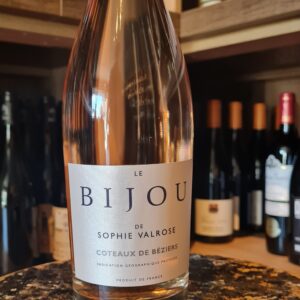 Le Bijou de Sophie Valrose is named after a lady who worked in the Languedoc vineyards during the late 19th century and became something of a local hero. At the time, it was largely women who worked in the vineyards; pruning and harvesting the vines. Sadly these women were often mistreated, overworked and underpaid. Sophie fought for women’s rights and drastically improved the conditions for her fellow female workers in the vineyard in which she worked. Bijou is a tribute to her memory and we share her story on the back of every bottle sold. The grapes are sourced from low-yielding old vines on the sloping hillsides of various vineyards in the Languedoc-Roussillon region of southern France. The areas are made up of old volcanic soils composed of 70% schist, which helps create high-quality grapes with great structure and freshness.Bijou’s flagship wine, a beautiful pale salmon coloured rosé. Elegantly fragrant, with aromas of wild strawberries, citrus and delicate floral notes. Round and creamy on the palate, with ripe red berry flavours and a soft minerality. Elegant and balanced with refreshing acidity and a silky smooth finish. The perfect accompaniment to canapés, white meats, fish and salads.
Le Bijou de Sophie Valrose is named after a lady who worked in the Languedoc vineyards during the late 19th century and became something of a local hero. At the time, it was largely women who worked in the vineyards; pruning and harvesting the vines. Sadly these women were often mistreated, overworked and underpaid. Sophie fought for women’s rights and drastically improved the conditions for her fellow female workers in the vineyard in which she worked. Bijou is a tribute to her memory and we share her story on the back of every bottle sold. The grapes are sourced from low-yielding old vines on the sloping hillsides of various vineyards in the Languedoc-Roussillon region of southern France. The areas are made up of old volcanic soils composed of 70% schist, which helps create high-quality grapes with great structure and freshness.Bijou’s flagship wine, a beautiful pale salmon coloured rosé. Elegantly fragrant, with aromas of wild strawberries, citrus and delicate floral notes. Round and creamy on the palate, with ripe red berry flavours and a soft minerality. Elegant and balanced with refreshing acidity and a silky smooth finish. The perfect accompaniment to canapés, white meats, fish and salads. -
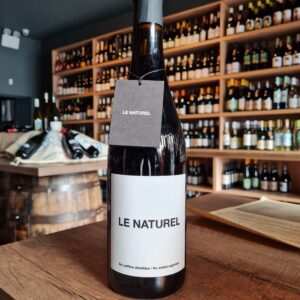 Le Naturel lives up to its name, it is a wine in which the Garnacha is expressed with great openness. On the nose aromas of blackberries and violets appear, while in the mouth it has a good attack of fresh fruit, typical of high altitude vineyards.It is a natural wine, without added sulfites, which also has the certificate of organic and vegan wine. With the aim of minimal intervention (in the field and in the winery) we found in Bodegas Aroa - Le Naturel a specimen of pure and enjoyable Grenache. Specially designed for consumption soon it is open and not for storage. Bodegas Aroa (Vintae group) is located in Zurucuáin, in the heart of the Yerri Valley , sheltered by the Urbasa and Andía Sierras. This winery is one of the pioneers in Navarra in its commitment to the recovery of organic farming practices .
Le Naturel lives up to its name, it is a wine in which the Garnacha is expressed with great openness. On the nose aromas of blackberries and violets appear, while in the mouth it has a good attack of fresh fruit, typical of high altitude vineyards.It is a natural wine, without added sulfites, which also has the certificate of organic and vegan wine. With the aim of minimal intervention (in the field and in the winery) we found in Bodegas Aroa - Le Naturel a specimen of pure and enjoyable Grenache. Specially designed for consumption soon it is open and not for storage. Bodegas Aroa (Vintae group) is located in Zurucuáin, in the heart of the Yerri Valley , sheltered by the Urbasa and Andía Sierras. This winery is one of the pioneers in Navarra in its commitment to the recovery of organic farming practices . -
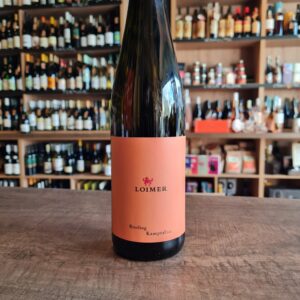 The Loimer estate is located around Langenlois in the sunny Kamptal region of Lower Austria, to the northwest of Vienna. Unlike many Austrian producers who go for a rich, sweet Alsace style, Fred Loimer obtains full ripeness in the vineyard yet ferments to dryness. The resulting wines (like the Loimer Riesling) display his trademark definition, zest and balance on the palate. Fred Loimer realised very early on that his future lay in wine, after his father converted the family farm into a winery. He attended Austria’s renowned Klosterneuburg University and later gained important experience at wineries in Nahe, Germany and in Napa Valley, California. On his return to Langenlois, Fred introduced new methods in the vineyards and winery, with the aim of continually improving the quality of the wine. In 1997, Fred took over the winery from his father and, in 1998, purchased and renovated a historical vaulted brick cellar (a former cellar of the Haindorf Castle) amidst the vines between Langenlois and Zöbing. The wines have been vinified and stored here since 1999. The 60 hectares of vineyards are divided into 100 parcels, planted on seven different soil types (ranging from loess, gravel, clay, sand and slate to Gföhler gneiss, a coarse-grained, metamorphic rock containing quartz, felspar and mica), which bring great complexity to the wines. There is no need to say that the high quality of their soils is crucial for the Loimer Riesling and its minerality. Situated at an altitude of 200-420m above sea level, the south facing vineyards benefit from warm days and cool nights, which encourage the development of the aromatic components in the grapes. The high summer temperatures are mitigated by the River Danube and the Waldviertel (forested area), while the well drained soils mean the vines can form deeply penetrating root systems, thus overcoming even long periods of drought without damage. Since 2006, the vineyard and cellar work has been conducted according to biodynamic principles.
The Loimer estate is located around Langenlois in the sunny Kamptal region of Lower Austria, to the northwest of Vienna. Unlike many Austrian producers who go for a rich, sweet Alsace style, Fred Loimer obtains full ripeness in the vineyard yet ferments to dryness. The resulting wines (like the Loimer Riesling) display his trademark definition, zest and balance on the palate. Fred Loimer realised very early on that his future lay in wine, after his father converted the family farm into a winery. He attended Austria’s renowned Klosterneuburg University and later gained important experience at wineries in Nahe, Germany and in Napa Valley, California. On his return to Langenlois, Fred introduced new methods in the vineyards and winery, with the aim of continually improving the quality of the wine. In 1997, Fred took over the winery from his father and, in 1998, purchased and renovated a historical vaulted brick cellar (a former cellar of the Haindorf Castle) amidst the vines between Langenlois and Zöbing. The wines have been vinified and stored here since 1999. The 60 hectares of vineyards are divided into 100 parcels, planted on seven different soil types (ranging from loess, gravel, clay, sand and slate to Gföhler gneiss, a coarse-grained, metamorphic rock containing quartz, felspar and mica), which bring great complexity to the wines. There is no need to say that the high quality of their soils is crucial for the Loimer Riesling and its minerality. Situated at an altitude of 200-420m above sea level, the south facing vineyards benefit from warm days and cool nights, which encourage the development of the aromatic components in the grapes. The high summer temperatures are mitigated by the River Danube and the Waldviertel (forested area), while the well drained soils mean the vines can form deeply penetrating root systems, thus overcoming even long periods of drought without damage. Since 2006, the vineyard and cellar work has been conducted according to biodynamic principles. -
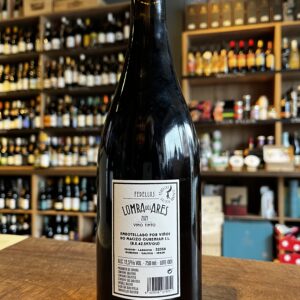
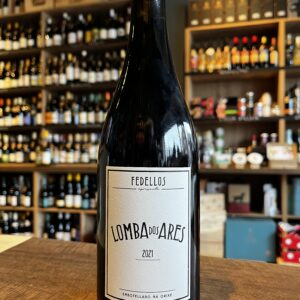 Lomba dos Ares is a Spanish take on Beaujolais, a blend of native grapes - Mencía, Mouratón, Garnacha Tintorera, Caiño and Bastardo - that captures the essence of Ribeira Sacra with a perfumed nose and plenty of freshness and finesse on the palate. It's not surprising that beautiful places like this produce soulful wines. Red fruits, orange peel, violets and cedar come in layers making this delicious to sip solo but also very versatile with charcuterie, roasted vegetable or pork dishes.
Lomba dos Ares is a Spanish take on Beaujolais, a blend of native grapes - Mencía, Mouratón, Garnacha Tintorera, Caiño and Bastardo - that captures the essence of Ribeira Sacra with a perfumed nose and plenty of freshness and finesse on the palate. It's not surprising that beautiful places like this produce soulful wines. Red fruits, orange peel, violets and cedar come in layers making this delicious to sip solo but also very versatile with charcuterie, roasted vegetable or pork dishes. -
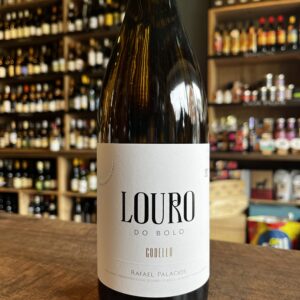 The best white wines of Spain are made of Godello from the region Valdeorras in Galicia. More and more this wine is can be seen in many wine lists across Ireland as its increasing popularity is par to the Albarino from Rias baixas or the Rueda's Verdejo. Rafael Palacios the maker of this wine comes from something of a winemaking dynasty. His father, uncle and brother are all highly regarded winemakers across Rioja, Priorat and other parts of the country. Rafael himself cut his teeth working on his father's Rioja estate, prior to training and working in Bordeaux and Coonawarra, South Australia. Rafa started this project in 2004 in the then little known region of Valdeorras, home of a few ancient plots of Godello vines. This grape variety was virtually extinct in Spain but Rafa and a few others realised its potential and extensive replanting of the variety began. The Louro is crafted from younger vines but is selected from plots that produce more age-worthy wines. Fermented with indigenous yeast and aged in used foudre, Louro showcases Rafa’s talent at balancing the minerality of the grape with the richness and texture of the élevage. Pair it with baked whitefish, bluefish, fish and vegetables, grilled fish, grilled whitefish, pasta with fish, poultry, rice with fish, roasted fish, roasted foods.
The best white wines of Spain are made of Godello from the region Valdeorras in Galicia. More and more this wine is can be seen in many wine lists across Ireland as its increasing popularity is par to the Albarino from Rias baixas or the Rueda's Verdejo. Rafael Palacios the maker of this wine comes from something of a winemaking dynasty. His father, uncle and brother are all highly regarded winemakers across Rioja, Priorat and other parts of the country. Rafael himself cut his teeth working on his father's Rioja estate, prior to training and working in Bordeaux and Coonawarra, South Australia. Rafa started this project in 2004 in the then little known region of Valdeorras, home of a few ancient plots of Godello vines. This grape variety was virtually extinct in Spain but Rafa and a few others realised its potential and extensive replanting of the variety began. The Louro is crafted from younger vines but is selected from plots that produce more age-worthy wines. Fermented with indigenous yeast and aged in used foudre, Louro showcases Rafa’s talent at balancing the minerality of the grape with the richness and texture of the élevage. Pair it with baked whitefish, bluefish, fish and vegetables, grilled fish, grilled whitefish, pasta with fish, poultry, rice with fish, roasted fish, roasted foods. -
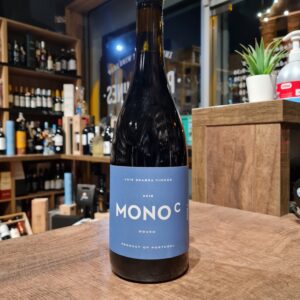 Luis Seabra is a producer that is at the forefront of the “new Douro” movement. Rather than making table wines that are, for all intents and purposes, “Little Ports,” Luis has taken a more balanced, restrained approach to winemaking in the oldest demarcated wine region in the world. His guiding principles are showcasing terroir and nuance above power and extraction. Bright, mineral driven and elegant, Luis’ wines are typically exposés of soil type. With the Mono C, he is taking a look at a particular variety – in this case, Castelão. While Castelão is a grape that is typically found further south in Portugal, Luis has found a mono-planted plot of the light-skinned grape in the Douro and is working his magic to craft a wine of unparalleled delicacy and elegance. Would pair it with charcuterie, grilled pork dishes, roasted poultry
Luis Seabra is a producer that is at the forefront of the “new Douro” movement. Rather than making table wines that are, for all intents and purposes, “Little Ports,” Luis has taken a more balanced, restrained approach to winemaking in the oldest demarcated wine region in the world. His guiding principles are showcasing terroir and nuance above power and extraction. Bright, mineral driven and elegant, Luis’ wines are typically exposés of soil type. With the Mono C, he is taking a look at a particular variety – in this case, Castelão. While Castelão is a grape that is typically found further south in Portugal, Luis has found a mono-planted plot of the light-skinned grape in the Douro and is working his magic to craft a wine of unparalleled delicacy and elegance. Would pair it with charcuterie, grilled pork dishes, roasted poultry -
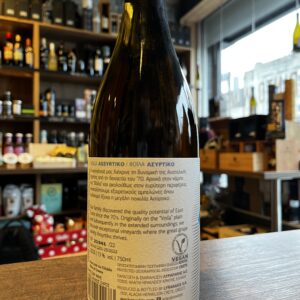
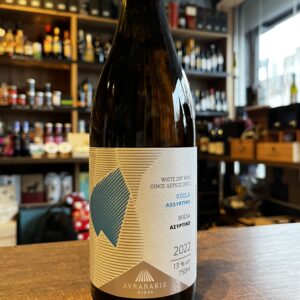 Anyone that has been to Greece or has interest in wines have come by the grape Assyrtiko . In the last few years, wines from Greece, in particularly this indigenous grape, have gotten the status as a world-class wine and prices have begun to rise especially from the Santorini region. This Vegan Assyrtiko from the Lyrarakis estate is one of them and it is still in the affordable range and fortunately, your everyday Assyrtiko needs can still be catered for. Being from east Crete rather than Santorini means prices are still competitive. Think down the lines of getting a wine from the Touraine region rather than the heart of the Loire Valley. Lyrarakis on Crete are a brilliant winery with a focus on indigenous Greek varieties. Their rendition of Assyrtiko is broader and more approachable than some of the tightly-wound examples on Santorini, but it's no less drinkable for that. It is in fact an ideal place to grow the white grape Assyrtiko. Both the Mediterranean breezes and the altitude of the Lyrarakis vineyards allows the grapes to have a much longer ripening period, preserving the grapes aromatics and acidity resulting in a wine with wonderful floral freshness, crisp citrus notes and a delicate mineral finish. Yamas!
Anyone that has been to Greece or has interest in wines have come by the grape Assyrtiko . In the last few years, wines from Greece, in particularly this indigenous grape, have gotten the status as a world-class wine and prices have begun to rise especially from the Santorini region. This Vegan Assyrtiko from the Lyrarakis estate is one of them and it is still in the affordable range and fortunately, your everyday Assyrtiko needs can still be catered for. Being from east Crete rather than Santorini means prices are still competitive. Think down the lines of getting a wine from the Touraine region rather than the heart of the Loire Valley. Lyrarakis on Crete are a brilliant winery with a focus on indigenous Greek varieties. Their rendition of Assyrtiko is broader and more approachable than some of the tightly-wound examples on Santorini, but it's no less drinkable for that. It is in fact an ideal place to grow the white grape Assyrtiko. Both the Mediterranean breezes and the altitude of the Lyrarakis vineyards allows the grapes to have a much longer ripening period, preserving the grapes aromatics and acidity resulting in a wine with wonderful floral freshness, crisp citrus notes and a delicate mineral finish. Yamas! -
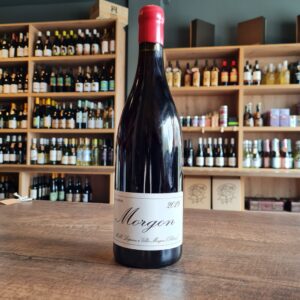 Domaine Marcel Lapierre Morgon is a natural red wine made by Domaine Marcel Lapierre with the Gamay variety in the AOC Morgon (Burgundy). Domaine Marcel Lapierre is one of the pioneer wineries that has been making natural wines since Marcel Lapierre, a true pacesetter among Beaujolais producers, took over the Villié-Morgon estate in 1973. With his work philosophy, he was committed to combining traditional best practices with new technologies so that his wines would be a true reflection of the landscape. In 1981, under the strong influence of natural wine master Jules Chavet, Marcel was among the first to produce wines of minimal intervention, without adding SO2 or any other substance. Domaine Marcel Lapierre Morgon 2018 is a fruity red wine with aromas of cherry, violet and liquorice, covered with a forest freshness and refreshing balsamic tones. On the palate it is structured, fresh and sweet. It begins with a sharp acidity that blends with the touches of fruit and liquorice and the intense minerality. This is a refreshing red, perfect for spring and summer; recommended to drink with charcuterie, paté, cheese, roast ham, roast lamb, roast chicken and turkey and with spicy Thai and Chinese dishes. Serve at the lower end of the suggested temperature range if you like your light red wines served cooler like the French
Domaine Marcel Lapierre Morgon is a natural red wine made by Domaine Marcel Lapierre with the Gamay variety in the AOC Morgon (Burgundy). Domaine Marcel Lapierre is one of the pioneer wineries that has been making natural wines since Marcel Lapierre, a true pacesetter among Beaujolais producers, took over the Villié-Morgon estate in 1973. With his work philosophy, he was committed to combining traditional best practices with new technologies so that his wines would be a true reflection of the landscape. In 1981, under the strong influence of natural wine master Jules Chavet, Marcel was among the first to produce wines of minimal intervention, without adding SO2 or any other substance. Domaine Marcel Lapierre Morgon 2018 is a fruity red wine with aromas of cherry, violet and liquorice, covered with a forest freshness and refreshing balsamic tones. On the palate it is structured, fresh and sweet. It begins with a sharp acidity that blends with the touches of fruit and liquorice and the intense minerality. This is a refreshing red, perfect for spring and summer; recommended to drink with charcuterie, paté, cheese, roast ham, roast lamb, roast chicken and turkey and with spicy Thai and Chinese dishes. Serve at the lower end of the suggested temperature range if you like your light red wines served cooler like the French -
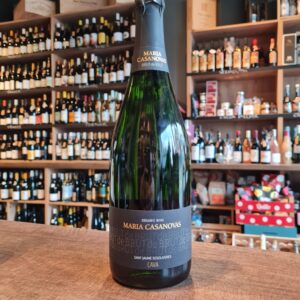 The Bodega or Cava Maria Casanovas is located in the heart of the Penedès, in Sant Sadurní d'Anoia, the centre of Cava production. It is owned by the Casanovas family and managed by three children of Maria Casanovas. Jordi and Jacint are responsible for the vineyards and the cellar, Rosa for administration and marketing. Maria Casanovas' parents were already grape growers and sold their produce to the large cava wineries. Cava has been produced under their own name since 1984. 13 hectares are owned and planted with the local grape varieties Xarel-lo, Parellada and Macabeo (Viura) as well as the international varieties Pinot Noir and Chardonnay. Maria Casanovas was one of the pioneers who introduced Pinot Noir to Penedès. Fossils can be found occasionally in the calcareous, gravelly clay soils. Food pairing suggestion: Apéro pastries, Tagliatelle al tartufo, Vegetable pie, Salad with vegetables, pulses, pasta
The Bodega or Cava Maria Casanovas is located in the heart of the Penedès, in Sant Sadurní d'Anoia, the centre of Cava production. It is owned by the Casanovas family and managed by three children of Maria Casanovas. Jordi and Jacint are responsible for the vineyards and the cellar, Rosa for administration and marketing. Maria Casanovas' parents were already grape growers and sold their produce to the large cava wineries. Cava has been produced under their own name since 1984. 13 hectares are owned and planted with the local grape varieties Xarel-lo, Parellada and Macabeo (Viura) as well as the international varieties Pinot Noir and Chardonnay. Maria Casanovas was one of the pioneers who introduced Pinot Noir to Penedès. Fossils can be found occasionally in the calcareous, gravelly clay soils. Food pairing suggestion: Apéro pastries, Tagliatelle al tartufo, Vegetable pie, Salad with vegetables, pulses, pasta -
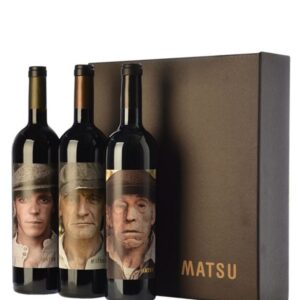 Matsu, the Japanese word for 'wait', pays homage to the generations of devoted wine makers. The images of the real-life wine-producers decorate the bottle and represent the essence of each of the wines. Picaro means 'rogue' or 'rascal', and this rapscallion of a wine is a youthful interpretation of the Toro region's style. El Recio translates as 'the tough guy', and is a more serious, mature wine, made from the product of some of Toro's oldest vines. 'The Old One' of the Matsu range, made from the fruit of selected Tinta de Toro vines, averaging 110 years of age - presented in an original gift box.
Matsu, the Japanese word for 'wait', pays homage to the generations of devoted wine makers. The images of the real-life wine-producers decorate the bottle and represent the essence of each of the wines. Picaro means 'rogue' or 'rascal', and this rapscallion of a wine is a youthful interpretation of the Toro region's style. El Recio translates as 'the tough guy', and is a more serious, mature wine, made from the product of some of Toro's oldest vines. 'The Old One' of the Matsu range, made from the fruit of selected Tinta de Toro vines, averaging 110 years of age - presented in an original gift box. -
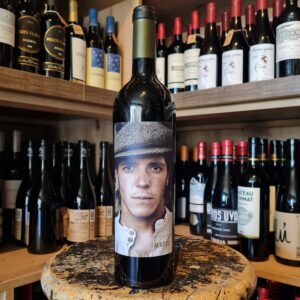 Picaro means 'rogue' or 'rascal'. I have always called it the young lad, as they also have 'El Recio' (the middle aged man) which is Matsu's idea for a reserva wine and the Gran Reserva, 'El Viejo' (old man just in case you didn't know). Bodegas Matsu is situated in the Toro region, right beside the Rueda region (known for the famous Verdejos). Toro wines are predominantly made of Tinta de Toro (tempranillo in this area of Spain) and are well known to be a mouthful of strength and personality due to its poor soil and hot summers. These vines in particular are 90 years old and are cultivated using the biodynamic techniques. Although the more conventional wines of this region are quite sharp, Matsu's wine range has achieved smoothness and elegance. Additionally, the clever thinking behind the labels means that they cater to a wide audience. I would recommend this red any day of the week.
Picaro means 'rogue' or 'rascal'. I have always called it the young lad, as they also have 'El Recio' (the middle aged man) which is Matsu's idea for a reserva wine and the Gran Reserva, 'El Viejo' (old man just in case you didn't know). Bodegas Matsu is situated in the Toro region, right beside the Rueda region (known for the famous Verdejos). Toro wines are predominantly made of Tinta de Toro (tempranillo in this area of Spain) and are well known to be a mouthful of strength and personality due to its poor soil and hot summers. These vines in particular are 90 years old and are cultivated using the biodynamic techniques. Although the more conventional wines of this region are quite sharp, Matsu's wine range has achieved smoothness and elegance. Additionally, the clever thinking behind the labels means that they cater to a wide audience. I would recommend this red any day of the week. -
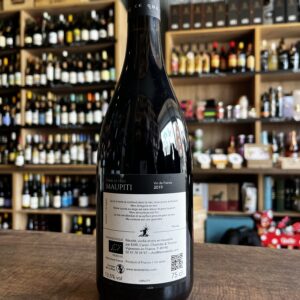
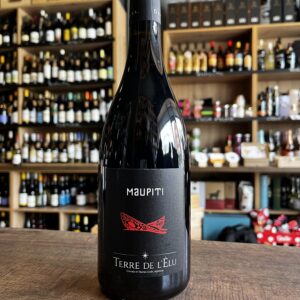 In January 2008, Charlotte and Thomas embarked on a marvelous winemaking adventure with the acquisition of the Clos de l’Élu domain, on the schist-rich lands of the Anjou Noir. With many years’ experience as a wine consultant (Thomas), in the fields of communication and management (Charlotte), they are both deeply passionate about the life of this domain which lies on the finest terroirs of the Layon valley. The 20 hectares are farmed organically and the domain offers a structured range of different wines. If it was the Chenin that attracted Thomas to Anjou, the red grape varieties (Cabernet Franc, Grolleau, Pineau d’Aunis, gamay) continue to inspire him with deep, rich vintages that are expressive and full of finesse. The team is driven by strong convictions, from the work in the vineyard to the cellar, in order to produce wines that truly reflect the terroir. In the vineyards: the whole domain was converted to organic farming in April 2010 (first certified organic vintage in 2013), severe disbudding, appropriate pruning modes depending on the grape variety and plot, soil work, manual harvest in 20 kg boxes, draconian sorting while harvesting. In the cellar: use of gravity as much as possible, natural fermentations, winemaking choice favoring the least manipulation of the grapes possible, winemaking of the reds in whole bunches, maceration and aging in tanks, weathered (or aged) barrels or clay amphorae.
In January 2008, Charlotte and Thomas embarked on a marvelous winemaking adventure with the acquisition of the Clos de l’Élu domain, on the schist-rich lands of the Anjou Noir. With many years’ experience as a wine consultant (Thomas), in the fields of communication and management (Charlotte), they are both deeply passionate about the life of this domain which lies on the finest terroirs of the Layon valley. The 20 hectares are farmed organically and the domain offers a structured range of different wines. If it was the Chenin that attracted Thomas to Anjou, the red grape varieties (Cabernet Franc, Grolleau, Pineau d’Aunis, gamay) continue to inspire him with deep, rich vintages that are expressive and full of finesse. The team is driven by strong convictions, from the work in the vineyard to the cellar, in order to produce wines that truly reflect the terroir. In the vineyards: the whole domain was converted to organic farming in April 2010 (first certified organic vintage in 2013), severe disbudding, appropriate pruning modes depending on the grape variety and plot, soil work, manual harvest in 20 kg boxes, draconian sorting while harvesting. In the cellar: use of gravity as much as possible, natural fermentations, winemaking choice favoring the least manipulation of the grapes possible, winemaking of the reds in whole bunches, maceration and aging in tanks, weathered (or aged) barrels or clay amphorae.Technical Sheet
-
 Menina d’Uva is a small winery located in Uva, a remote village in the quiet and desolate countryside of the Northeast of Portugal. Female winemaker Aline Domingues moved from Paris to this area from which her parents had emigrated to Paris to give their children better opportunities. A controversial move within the family but one that I wholeheartedly support. Aline clearly is a talented winemaker crafting beautifully pure wines. Made from 70% red grapes (including Bastardo, known in the Jura as Trousseau) and 30% white grapes including Malvasia and white Bastardo. It’s still a hearthy red that’s crispy and refreshing; cherries, pomegranate with a beautiful smell of the forest. Highly recommended.
Menina d’Uva is a small winery located in Uva, a remote village in the quiet and desolate countryside of the Northeast of Portugal. Female winemaker Aline Domingues moved from Paris to this area from which her parents had emigrated to Paris to give their children better opportunities. A controversial move within the family but one that I wholeheartedly support. Aline clearly is a talented winemaker crafting beautifully pure wines. Made from 70% red grapes (including Bastardo, known in the Jura as Trousseau) and 30% white grapes including Malvasia and white Bastardo. It’s still a hearthy red that’s crispy and refreshing; cherries, pomegranate with a beautiful smell of the forest. Highly recommended. -
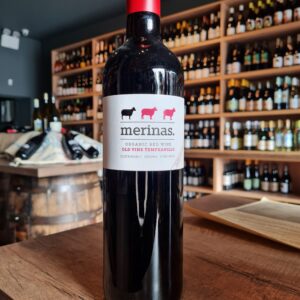 The Mesta was a powerful alliance of shepherds in medieval Castile, who controlled the “cañadas”: traditional rights-of-way for migrating sheep. to this day, the “cañadas” are protected from being blocked or built upon. Our vineyards are nestled deep in the land of The Mesta, and are still passed over by flocks on their annual migration – a reminder of ancient rights, and a cultural cue for continued co-existence with nature. Produced from organically farmed vineyards in Uclés (Castile, Spain). Managed as an integrated ecosystem and studded with centenary oak trees. The continental climate with sunny days and cool nights allow us to achieve intense fruit and excellent varietal definition, while retaining remarkable freshness Mesta Tempranillo is a vibrant and juicy, unoaked red wine, showing great purity and the typicity of high-altitude Tempranillo, with expressive and well-defined aromas of red berries, rosemary and a touch of liquorice. Bright ruby red colour. Fresh and with an excellent persistence on the palate, with round texture and a satisfyingly dry finish. Very versatile, medium-bodied food wine, excellent with tapas, grilled meat and pasta.
The Mesta was a powerful alliance of shepherds in medieval Castile, who controlled the “cañadas”: traditional rights-of-way for migrating sheep. to this day, the “cañadas” are protected from being blocked or built upon. Our vineyards are nestled deep in the land of The Mesta, and are still passed over by flocks on their annual migration – a reminder of ancient rights, and a cultural cue for continued co-existence with nature. Produced from organically farmed vineyards in Uclés (Castile, Spain). Managed as an integrated ecosystem and studded with centenary oak trees. The continental climate with sunny days and cool nights allow us to achieve intense fruit and excellent varietal definition, while retaining remarkable freshness Mesta Tempranillo is a vibrant and juicy, unoaked red wine, showing great purity and the typicity of high-altitude Tempranillo, with expressive and well-defined aromas of red berries, rosemary and a touch of liquorice. Bright ruby red colour. Fresh and with an excellent persistence on the palate, with round texture and a satisfyingly dry finish. Very versatile, medium-bodied food wine, excellent with tapas, grilled meat and pasta. -
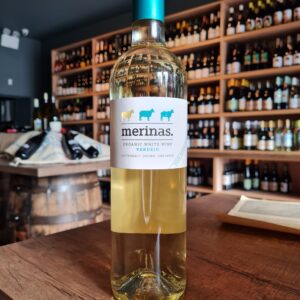 Merinas comes from the Bodegas y Viñedos Fontana, located in the town of Cuenca. The name Merinas is also a reference to the merino sheep, the most famous sheep breed in the world which, incidentally, sometimes seems to scurry around in the vines. A crisp, aromatic white wine, showing great purity of aromas and a precise expression of the Verdejo grape. Bright, pale straw yellow, with intense, fresh notes of grass, fennel and white pepper. Dry but juicy on the palate, with excellent balance, a moderate alcohol of only 12,5% with a persistent, slightly mineral finish. Excellent as an aperitif and with pasta, salads, poultry and fish dishes.
Merinas comes from the Bodegas y Viñedos Fontana, located in the town of Cuenca. The name Merinas is also a reference to the merino sheep, the most famous sheep breed in the world which, incidentally, sometimes seems to scurry around in the vines. A crisp, aromatic white wine, showing great purity of aromas and a precise expression of the Verdejo grape. Bright, pale straw yellow, with intense, fresh notes of grass, fennel and white pepper. Dry but juicy on the palate, with excellent balance, a moderate alcohol of only 12,5% with a persistent, slightly mineral finish. Excellent as an aperitif and with pasta, salads, poultry and fish dishes. -
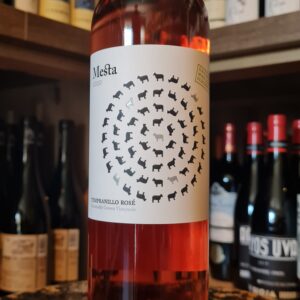 Mesta is a range of organically and sustainably grown single varietal wines, which stylishly showcase the Spanish wine revolution under the symbol of the Mesta. Mesta was a powerful alliance of sheep ranchers in medieval Castile, who controlled the cañadas: the traditional rights of way for migrating sheep. To this day the cañadas are protected from being blocked or built upon, a reminder of ancient rights and a model of coexistence with nature. This modern range, from the fashionable DO Uclés in central Castile, offers wines of great purity and varietal typicity.A versatile wine which accompanies spicy dishes perfectly, Asian curries, seafood risotto or a light salad with grilled prawns. Rosé wines are in fashion not just in the summer but also throughout the year, and this beautiful Mesta Rosé is a serious contender in the Rosé world. Especially at this price!!!
Mesta is a range of organically and sustainably grown single varietal wines, which stylishly showcase the Spanish wine revolution under the symbol of the Mesta. Mesta was a powerful alliance of sheep ranchers in medieval Castile, who controlled the cañadas: the traditional rights of way for migrating sheep. To this day the cañadas are protected from being blocked or built upon, a reminder of ancient rights and a model of coexistence with nature. This modern range, from the fashionable DO Uclés in central Castile, offers wines of great purity and varietal typicity.A versatile wine which accompanies spicy dishes perfectly, Asian curries, seafood risotto or a light salad with grilled prawns. Rosé wines are in fashion not just in the summer but also throughout the year, and this beautiful Mesta Rosé is a serious contender in the Rosé world. Especially at this price!!! -
Out of stock
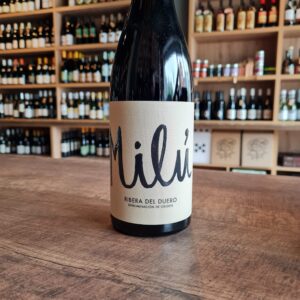 A rich and satisfying Ribera del Duero red, from a quality focussed micro producer Quinta Milú. This is a family run project in the Ribera del Duero from the Asturian viticulturist Germán R. Blanco. A small project which for nearly 10 years now has looked for wines which tell us about where they were born, a small village by the name of La Aguilera situated in the province of Burgos. Germán makes his elegant, fruit-forward wines using foot-treading, wild yeast fermentation and minimal handling. Not filtered, not clarified and not stabilized is his ethos. All his wines share a delicious rusticity, purity of fruit, and incredible freshness. Germán calls this— his flagship wine— a “vino de pueblo”, which translates as “a wine for every day and for everyone.” Pair it with braised meats, steak, game, lamb, root veggies, hard cheese or just have it on its own.
A rich and satisfying Ribera del Duero red, from a quality focussed micro producer Quinta Milú. This is a family run project in the Ribera del Duero from the Asturian viticulturist Germán R. Blanco. A small project which for nearly 10 years now has looked for wines which tell us about where they were born, a small village by the name of La Aguilera situated in the province of Burgos. Germán makes his elegant, fruit-forward wines using foot-treading, wild yeast fermentation and minimal handling. Not filtered, not clarified and not stabilized is his ethos. All his wines share a delicious rusticity, purity of fruit, and incredible freshness. Germán calls this— his flagship wine— a “vino de pueblo”, which translates as “a wine for every day and for everyone.” Pair it with braised meats, steak, game, lamb, root veggies, hard cheese or just have it on its own. -
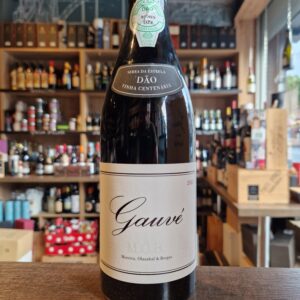 This project was born from the will of three winemakers, Jorge Moreira, Francisco Olazabal and Jorge Serôdio Borges, to make a wine together. The chosen region was the Dão, a region for which there is a common admiration that was born in the tasting of older wines, from the 60s and 70s that surprise for their elegance and freshness. The identity and complexity of these wines is indeed remarkable and serves as an inspiration for MOB wines.
This project was born from the will of three winemakers, Jorge Moreira, Francisco Olazabal and Jorge Serôdio Borges, to make a wine together. The chosen region was the Dão, a region for which there is a common admiration that was born in the tasting of older wines, from the 60s and 70s that surprise for their elegance and freshness. The identity and complexity of these wines is indeed remarkable and serves as an inspiration for MOB wines. -
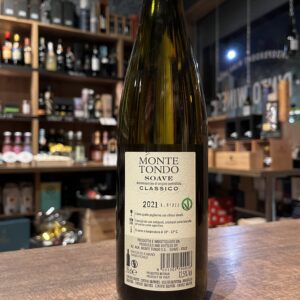
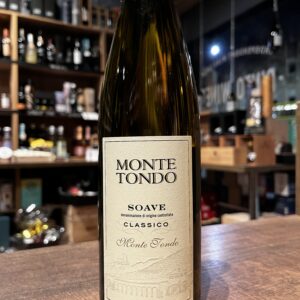
Monte Tondo is a family estate located in the beautiful hillside vineyards of Soave. Here the soils range from volcanic to chalky, which alongside the varying microclimates, gives the wines distinct flavour characteristics and individualistic style.
Alongside his family, winemaker Gino Magnabosco is part of the third generation to run the estate. They believe that hard work, drive, and determination are key to obtaining the best results from their land. Maintaining, nourishing, and cherishing the land of their ancestors is of utmost importance. And although not certified, they farm using organic practices and an environmentally friendly approach to both viticulture and vinification. No chemicals are used in their production and they recycle everything excess coming from the vineyard (stems as fertilizers, skins for grappa, pruned branches for heating and fertilizer).
Small proportions of other varieties are allowed in the production of Soave, but Monte Tondo focus their concentration purely on Garganega. Garganega is a variety so versatile and easily culinary matched but also with the ability to produce complex wines with age-ability.
A very good example of Soave at a very good price. This over-delivers.. Perfect with salads and light fish and shellfish dishes.
-
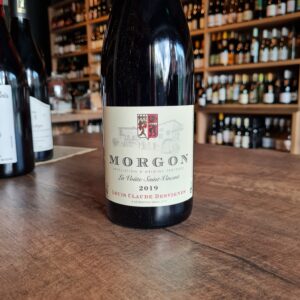 Louis-Claude Desvignes is a family estate that dates back to 1700. The Desvignes range is "La Voûte Saint Vincent", named for the vault or "voûte" of the old family house and for the patron saint of winemakers. It was Louis-Claude who began to turn the estate’s grapes into wine, and now with the reins handed over to his two sons Louis-Benoît and Claude-Emmanuelle Desvignes. It is a blend of certified-organic estate parcels totalling 4.5 hectares in the climat of Douby, which lies in the northeast corner of Morgon along the border of Fleurie. The La Voûte vines average 50 years old and are planted in Douby's typical sandy, decomposed-granite soils. Viticulture and vinification are consistent across all Desvignes wines. In the case of La Voûte, the parcels are all vinified separately.
Louis-Claude Desvignes is a family estate that dates back to 1700. The Desvignes range is "La Voûte Saint Vincent", named for the vault or "voûte" of the old family house and for the patron saint of winemakers. It was Louis-Claude who began to turn the estate’s grapes into wine, and now with the reins handed over to his two sons Louis-Benoît and Claude-Emmanuelle Desvignes. It is a blend of certified-organic estate parcels totalling 4.5 hectares in the climat of Douby, which lies in the northeast corner of Morgon along the border of Fleurie. The La Voûte vines average 50 years old and are planted in Douby's typical sandy, decomposed-granite soils. Viticulture and vinification are consistent across all Desvignes wines. In the case of La Voûte, the parcels are all vinified separately. -
Out of stock
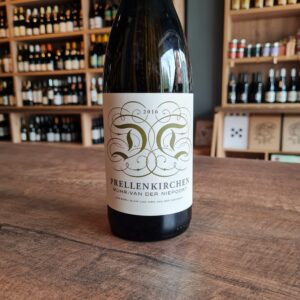 The exciting Muhr-Van der Niepoort project began in 2002 as a collaboration between Austrian PR guru Dorli Muhr and celebrated Portuguese winemaker Dirk Niepoort. Although the name is taken from the village of Prellenkirschen, all of the grapes for the white are sourced from the Spitzerberg, or a continuation of it. A blend of 90% Gruner Veltliner (35 year old vines) and 10% Riesling (planted in 1950), the grapes see some skin contact in the fermentation, imbuing the final wine with tension and extract, a mouth-watering savoury salinity and clearly-delineated spicy flavours of white pepper, fennel and cumin. Deep and a touch wild on the palate but with enormous personality and interest, its deep savoury style will appeal to lovers of edgy yet serious food-friendly whites.
The exciting Muhr-Van der Niepoort project began in 2002 as a collaboration between Austrian PR guru Dorli Muhr and celebrated Portuguese winemaker Dirk Niepoort. Although the name is taken from the village of Prellenkirschen, all of the grapes for the white are sourced from the Spitzerberg, or a continuation of it. A blend of 90% Gruner Veltliner (35 year old vines) and 10% Riesling (planted in 1950), the grapes see some skin contact in the fermentation, imbuing the final wine with tension and extract, a mouth-watering savoury salinity and clearly-delineated spicy flavours of white pepper, fennel and cumin. Deep and a touch wild on the palate but with enormous personality and interest, its deep savoury style will appeal to lovers of edgy yet serious food-friendly whites. -
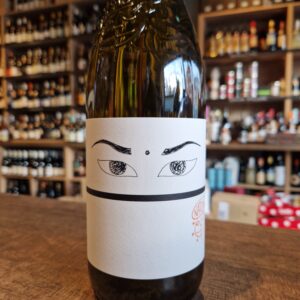 Nat Cool is naturally “cool and funky”. It represents an innovative concept initiated by Niepoort, in which various producers came together to create light, easy-to-drink wines. In the Vinho Verde region, we produced a wine typical of the region – a wine which references the “cloudy” wines of the past which were bottled with some residual sugar and fine lees, and therefore re-fermented in the bottle. Welcome to the Nat Cool world! This white wine was produced using a minimal intervention winemaking approach and is naturally turbid as it fermented in the bottle. It is intentionally not clarified and its aromas are reminiscent of the wines that used to be produced in the Vinho Verde region long ago. This is an intentionally uncomplicated wine: lightly shake the bottle before opening and enjoy with traditional Portuguese snacks!
Nat Cool is naturally “cool and funky”. It represents an innovative concept initiated by Niepoort, in which various producers came together to create light, easy-to-drink wines. In the Vinho Verde region, we produced a wine typical of the region – a wine which references the “cloudy” wines of the past which were bottled with some residual sugar and fine lees, and therefore re-fermented in the bottle. Welcome to the Nat Cool world! This white wine was produced using a minimal intervention winemaking approach and is naturally turbid as it fermented in the bottle. It is intentionally not clarified and its aromas are reminiscent of the wines that used to be produced in the Vinho Verde region long ago. This is an intentionally uncomplicated wine: lightly shake the bottle before opening and enjoy with traditional Portuguese snacks! -
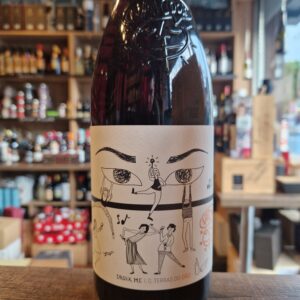 Nat Cool is an innovative, naturally “cool and funky” concept initiated by Niepoort in the Vinho Verde wine region. The movement later expanded into Bairrada and the Douro Valley and is now represented in various Portuguese as well as international wine regions. Nat Cool is not just about producing low-intervention wines – it embodies a movement uniting many different producers striving towards a shared goal of crafting uncomplicated, light and easy-to-drink wines. In 2020, the Nat Cool “family” grew, with its foray into Portugal’s Dão region. It is here, on the slopes of the Serra da Estrela Mountain Range that the DrinkMe Nat Cool is created and where we explore the region’s potential for elegant, fresh and straight-forward wines. Pair it with Light and simple dishes as well as comfort food
Nat Cool is an innovative, naturally “cool and funky” concept initiated by Niepoort in the Vinho Verde wine region. The movement later expanded into Bairrada and the Douro Valley and is now represented in various Portuguese as well as international wine regions. Nat Cool is not just about producing low-intervention wines – it embodies a movement uniting many different producers striving towards a shared goal of crafting uncomplicated, light and easy-to-drink wines. In 2020, the Nat Cool “family” grew, with its foray into Portugal’s Dão region. It is here, on the slopes of the Serra da Estrela Mountain Range that the DrinkMe Nat Cool is created and where we explore the region’s potential for elegant, fresh and straight-forward wines. Pair it with Light and simple dishes as well as comfort food -
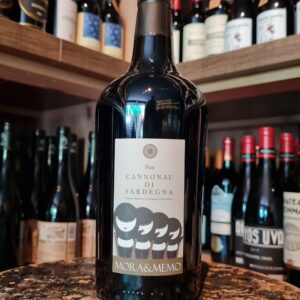 In a region dominated by cooperatives, Mora e Memo stand out for many reasons. This beautiful estate sits high in the hills in the South East of Sardinia just a few kilometres from the sea. Focused on the indigenous Sardinian varieties of Cannonau and Vermentino the combination of mature vineyards, sensitive farming and a delicate touch in their modern and technologically well equipped cellar results in elegant, vibrant mineral wines- very different from the rustic Sardinian norm. Pair it with Salami Antipasti, pasta dishes with tasty sauces, red meats, mature cheeses.
In a region dominated by cooperatives, Mora e Memo stand out for many reasons. This beautiful estate sits high in the hills in the South East of Sardinia just a few kilometres from the sea. Focused on the indigenous Sardinian varieties of Cannonau and Vermentino the combination of mature vineyards, sensitive farming and a delicate touch in their modern and technologically well equipped cellar results in elegant, vibrant mineral wines- very different from the rustic Sardinian norm. Pair it with Salami Antipasti, pasta dishes with tasty sauces, red meats, mature cheeses. -
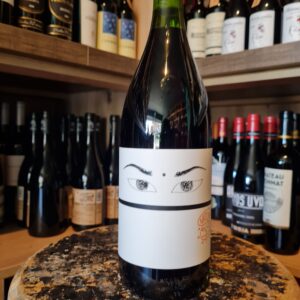 The Nat’Cool project is an innovative concept initiated by Niepoort, in which various producers came together to create light and easy-to-drink wines. This is the original Nat’Cool wine, from the Bairrada region where they are showcasing the elegant side of the Baga grape variety. Hands off wine making, Carbonic Maceration, soft, light expression of Baga. Baga is a touch grape which is very high in tannin and generally needs time to mature and express its delightful floral aromas and fruit character. However, here in the Bairrada with 80-100 year old vines and hands off wine making including carbonic maceration (which generally extracts less tannin), the astringent elements of the Baga grape are tamed and the resulting wine is pure juicy, fresh red with delicious wild berries, floral notes and light body. This wine is great fun, on opening there is a note of spritz but this vanishes quickly, I reckon it is just the wine's youthful spirit leaping from the bottle on its re-acquaintance with oxygen. What follows is very easy, juicy red which can be enjoyed chilled in the summer with a BBQ or at room temp in the autumn with some field mushrooms. The litre bottle and 12.5% abv is fantastic as between two, you have enough wine and not enough booze to make you suffer for it. A great addition to Niepoort portfolio, the wines go from strength to strength.
The Nat’Cool project is an innovative concept initiated by Niepoort, in which various producers came together to create light and easy-to-drink wines. This is the original Nat’Cool wine, from the Bairrada region where they are showcasing the elegant side of the Baga grape variety. Hands off wine making, Carbonic Maceration, soft, light expression of Baga. Baga is a touch grape which is very high in tannin and generally needs time to mature and express its delightful floral aromas and fruit character. However, here in the Bairrada with 80-100 year old vines and hands off wine making including carbonic maceration (which generally extracts less tannin), the astringent elements of the Baga grape are tamed and the resulting wine is pure juicy, fresh red with delicious wild berries, floral notes and light body. This wine is great fun, on opening there is a note of spritz but this vanishes quickly, I reckon it is just the wine's youthful spirit leaping from the bottle on its re-acquaintance with oxygen. What follows is very easy, juicy red which can be enjoyed chilled in the summer with a BBQ or at room temp in the autumn with some field mushrooms. The litre bottle and 12.5% abv is fantastic as between two, you have enough wine and not enough booze to make you suffer for it. A great addition to Niepoort portfolio, the wines go from strength to strength. -
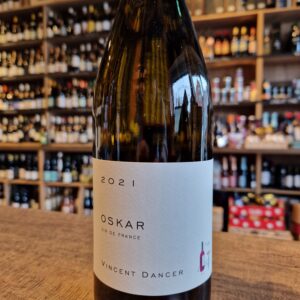
This is a unique wine from a once off production from Vincent Dancer. Oskar is the result of Vincent Dancer frustration with the low yeald of his top four Vineyards due frost that happen right after the fruit started to grow resulting in huge losses. Oskar is the name of Théo Dancer’s Australian Shepard.
So, this incredibly rare, one-off bottling comprises of a roughly equal amount of Chassagne-Montrachet 1er Cru La Romanée, Chassagne-Montrachet 1er Cru Tête du Clos, Meursault 1er Cru Perrières and Grand Cru Chevalier-Montrachet. Naturally, by blending across villages, Dancer has had to declassify this wine and chose Vin de France instead of the risker option of Bourgogne Blanc! Of course, this will have little bearing on a wine that is set to become a unicorn.
This true rarity from the Dancer estate is a pure sensory pleasure of great rarity, as only two barrels were produced. Pinto Wines has the enormous honour to stock Vincent Dancer in general nevermind this unique wine.
If you'd ask me I wouldn't drink this wine with food or any other beverage. Simply on it's own and and my best friend and wife. But if you really have to pair it then I would suggest stinky cheeses, seafood and why not the coq au vin
-
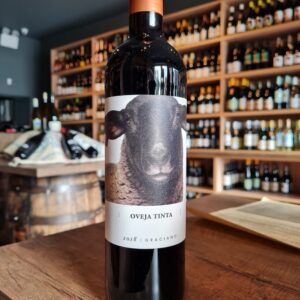 Graciano is one of Spain’s best kept wine secrets - a red grape with thick skins that is a tricky one to grow, which means there’s precious little of it about, even in the vineyards of the Rioja, where it is one of the traditional ingredients in the wine of the same name. This Biio-Organic wine has ruby red color with violet rims. On the nose aromas of wild flowers and ripe fruit, strawberry and blackberries. On the palate it is fresh and fruity, with a good level of acidity and moderate tannins.
Graciano is one of Spain’s best kept wine secrets - a red grape with thick skins that is a tricky one to grow, which means there’s precious little of it about, even in the vineyards of the Rioja, where it is one of the traditional ingredients in the wine of the same name. This Biio-Organic wine has ruby red color with violet rims. On the nose aromas of wild flowers and ripe fruit, strawberry and blackberries. On the palate it is fresh and fruity, with a good level of acidity and moderate tannins. -
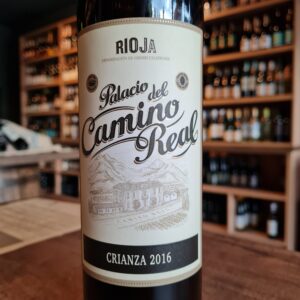 Palacio del Camino Real winery is located in the Najerilla Valley in Rioja. Isolated by the absence of railways and therefore the big wineries, the Najerilla Valley has maintained a tradition of small vineyards, consistently producing fruit of extraordinary freshness and quality. Palacio del Camino Real Crianza is a return to the essence of Rioja wines from the beginning of the 20th century in which Garnacha was the protagonist and a small percentage of white grapes could also be found. They are fresh, elegant, round and friendly wines. Palacio del Camino Real Crianza, is a red wine with an attractive ruby red color that impresses with its complex nose in which the nuances of its aging are perfectly integrated with the freshness and intensity of its chosen grapes. In the mouth it is a wine, it is a fresh, friendly, balanced wine with a long aftertaste.
Palacio del Camino Real winery is located in the Najerilla Valley in Rioja. Isolated by the absence of railways and therefore the big wineries, the Najerilla Valley has maintained a tradition of small vineyards, consistently producing fruit of extraordinary freshness and quality. Palacio del Camino Real Crianza is a return to the essence of Rioja wines from the beginning of the 20th century in which Garnacha was the protagonist and a small percentage of white grapes could also be found. They are fresh, elegant, round and friendly wines. Palacio del Camino Real Crianza, is a red wine with an attractive ruby red color that impresses with its complex nose in which the nuances of its aging are perfectly integrated with the freshness and intensity of its chosen grapes. In the mouth it is a wine, it is a fresh, friendly, balanced wine with a long aftertaste. -
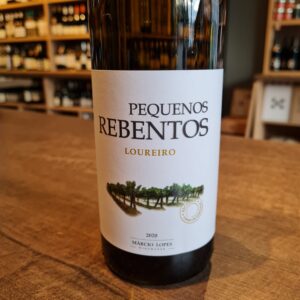 Márcio Lopes studied as an engineer, but cut his winemaking teeth working for two years with Vinho Verde master Anselmo Mendes in Melgaço. He then travelled to Australia where he made wine in Rutherglen and Tasmania, another cool climate region. He returned to Portugal in 2010 to start his own projects, including Pequenos Rebentos in Vinho Verde. He initially started working with Alvarinho and Trajadura (known as Albariño and Treixadura in Spain) from the sub-regions of Monção and Melgaço. These areas have a very particular microclimate, with slightly less Atlantic influence than the rest of the region - winters are cold with moderate rainfall and summers are hot and dry. During 2016 he also started to grow and vinify local varietals Loureiro. He now farms 5ha of vineyards, planted on granite, as well as buying some grapes from selected growers who also work in the same sustainable way and without herbicides. His winemaking is low intervention, he ferments using natural yeasts, and like many of our producers he believes that if the fruit is good enough he will make quality wines with balance that reflect his terroir. This seems to be working - his wines are distinctively fresh and vibrant, showing bright and clear typical variety aromas.
Márcio Lopes studied as an engineer, but cut his winemaking teeth working for two years with Vinho Verde master Anselmo Mendes in Melgaço. He then travelled to Australia where he made wine in Rutherglen and Tasmania, another cool climate region. He returned to Portugal in 2010 to start his own projects, including Pequenos Rebentos in Vinho Verde. He initially started working with Alvarinho and Trajadura (known as Albariño and Treixadura in Spain) from the sub-regions of Monção and Melgaço. These areas have a very particular microclimate, with slightly less Atlantic influence than the rest of the region - winters are cold with moderate rainfall and summers are hot and dry. During 2016 he also started to grow and vinify local varietals Loureiro. He now farms 5ha of vineyards, planted on granite, as well as buying some grapes from selected growers who also work in the same sustainable way and without herbicides. His winemaking is low intervention, he ferments using natural yeasts, and like many of our producers he believes that if the fruit is good enough he will make quality wines with balance that reflect his terroir. This seems to be working - his wines are distinctively fresh and vibrant, showing bright and clear typical variety aromas. -
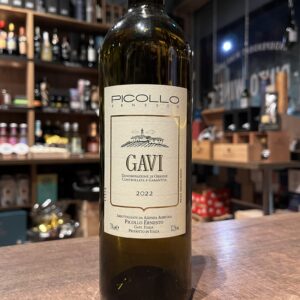 Picollo Gavi Ernesto is perched among the rolling hills that surround the town of Gavi. The climate here is much more mediterranean than in the north, benefiting from the constant maritime breezes, unique to the southern Piedmont. Picollo Ernesto’s vineyards sit near 260 meters above sea level in Rovereto di Gavi, one of the most prestigious area of the appellation. Our 16 hectares of vineyards are planted exclusively with Cortese, a hearty, high acid white varietal, perfectly suited for this area in northern Italy. Cortese thrives in difficult soil, dry climate, and full sun exposure, which Rovereto amply provides. Picollo’s vineyards are predominantly south-facing and the soils have a higher concentration of clay than marl, which allows for year-round water conservation, even in the peak of summer. Lorenzo Picollo founded the winery in 1945. The winemaking and day-to-day management was transferred to his son, Ernesto, and is now in the hands of his grandson, Gianlorenzo. Innovating along the way, Gianlorenzo continues to carry the family’s legacy forward with great success. Their lands are predominantly in the Rovereto zone, the historic Le Rive vineyards are over sixty years old instead their newest purchase of two hectares lies within the zone of Tassarolo. The grapes for all of Picollo’s wines are hand harvested. The winery itself has recently been modernized but the processes remain traditional, with sparing intervention in the winemaking and no artificial pesticides or herbicides used in the vineyards. With the intent of showcasing the Cortese in its purest form. All Gavi’s are fermented and aged exclusively in stainless steel. It is perfect with haute cuisine, ideal for fish dishes and aperitif
Picollo Gavi Ernesto is perched among the rolling hills that surround the town of Gavi. The climate here is much more mediterranean than in the north, benefiting from the constant maritime breezes, unique to the southern Piedmont. Picollo Ernesto’s vineyards sit near 260 meters above sea level in Rovereto di Gavi, one of the most prestigious area of the appellation. Our 16 hectares of vineyards are planted exclusively with Cortese, a hearty, high acid white varietal, perfectly suited for this area in northern Italy. Cortese thrives in difficult soil, dry climate, and full sun exposure, which Rovereto amply provides. Picollo’s vineyards are predominantly south-facing and the soils have a higher concentration of clay than marl, which allows for year-round water conservation, even in the peak of summer. Lorenzo Picollo founded the winery in 1945. The winemaking and day-to-day management was transferred to his son, Ernesto, and is now in the hands of his grandson, Gianlorenzo. Innovating along the way, Gianlorenzo continues to carry the family’s legacy forward with great success. Their lands are predominantly in the Rovereto zone, the historic Le Rive vineyards are over sixty years old instead their newest purchase of two hectares lies within the zone of Tassarolo. The grapes for all of Picollo’s wines are hand harvested. The winery itself has recently been modernized but the processes remain traditional, with sparing intervention in the winemaking and no artificial pesticides or herbicides used in the vineyards. With the intent of showcasing the Cortese in its purest form. All Gavi’s are fermented and aged exclusively in stainless steel. It is perfect with haute cuisine, ideal for fish dishes and aperitif


